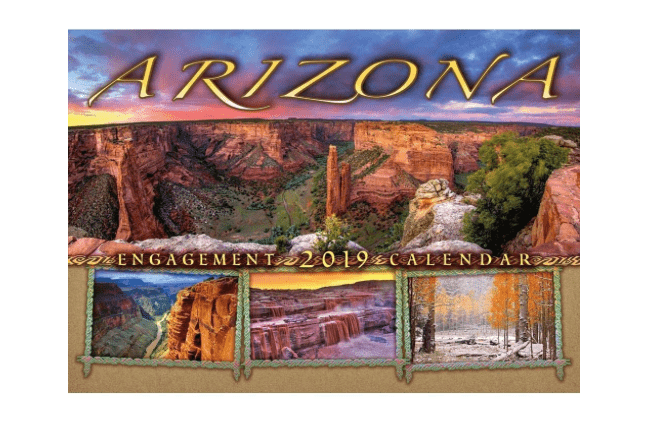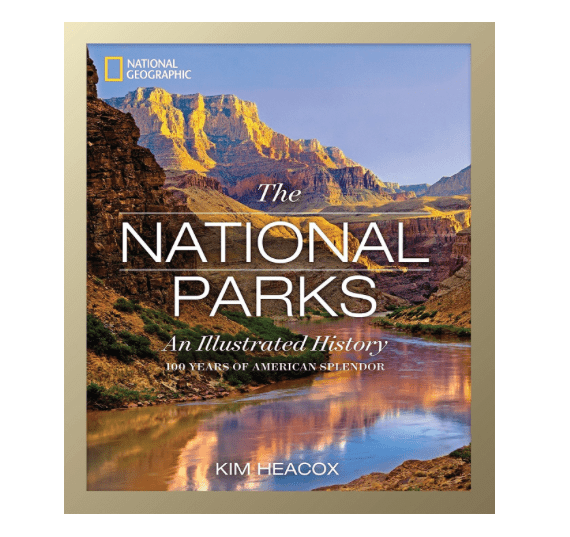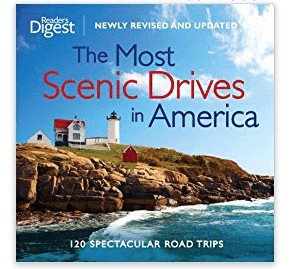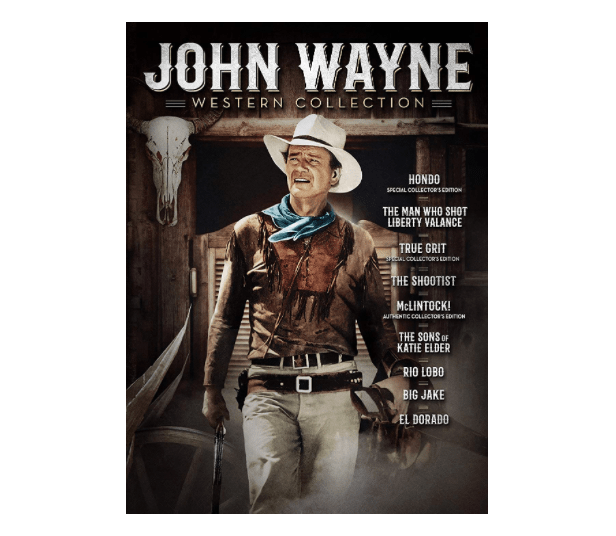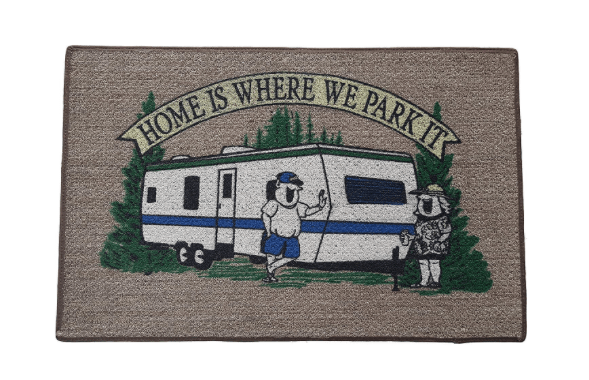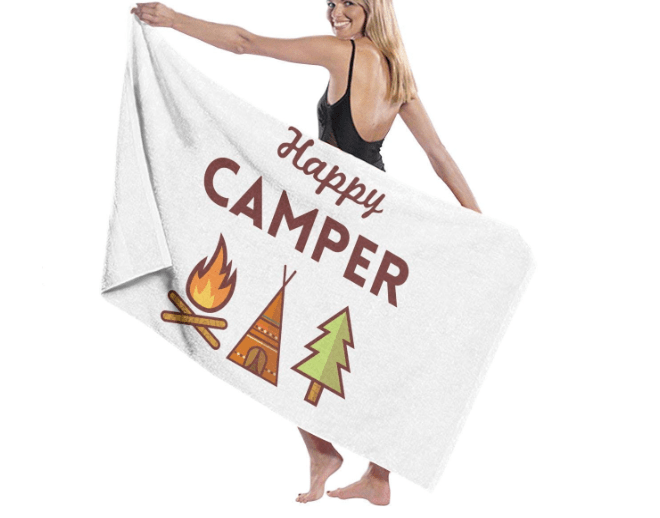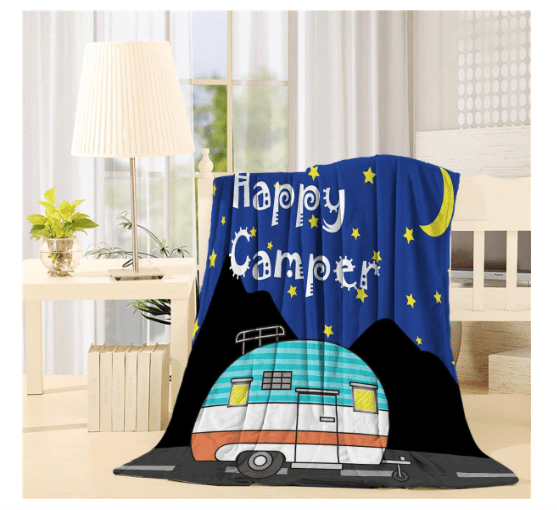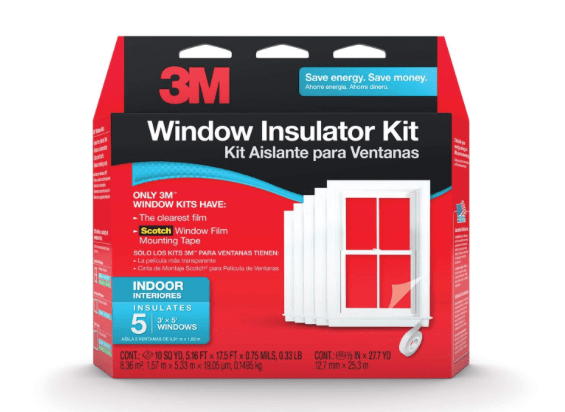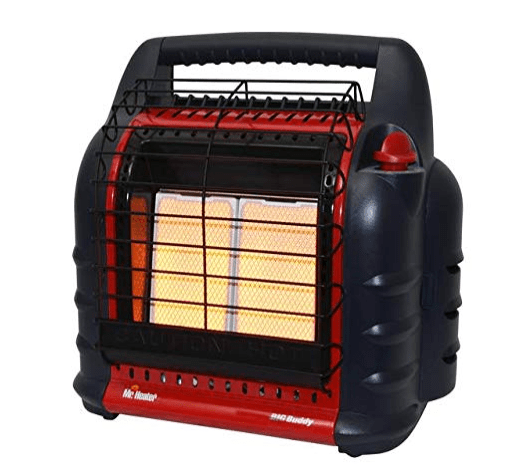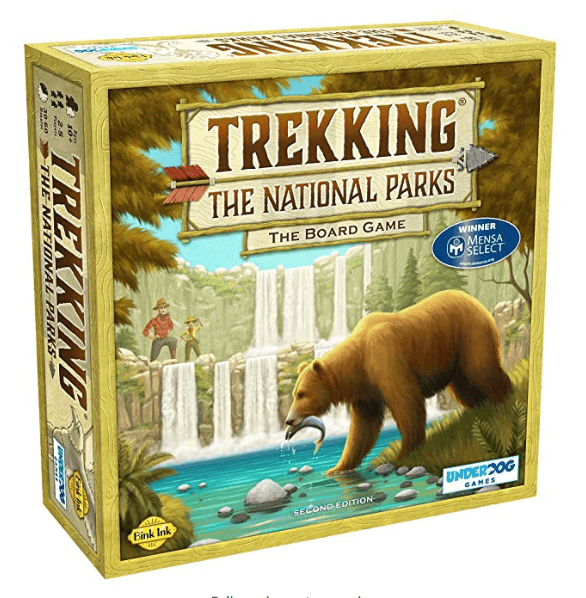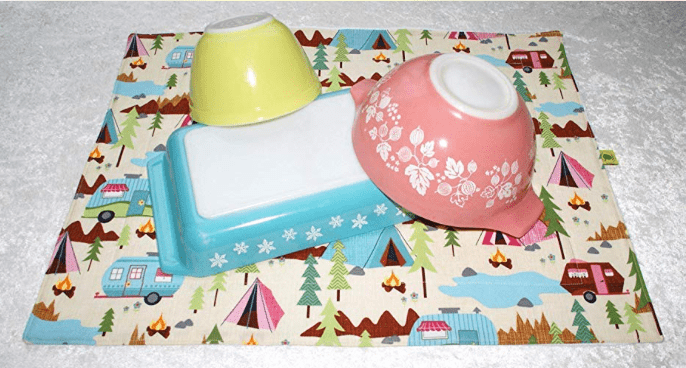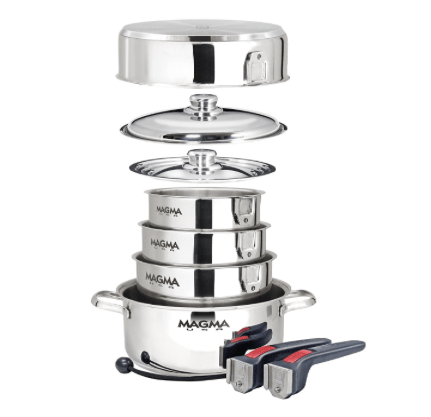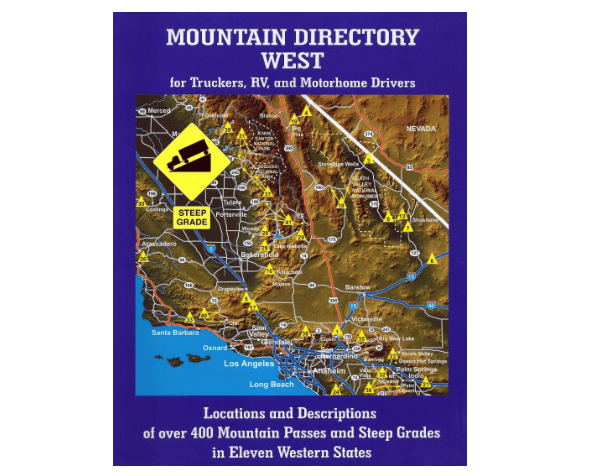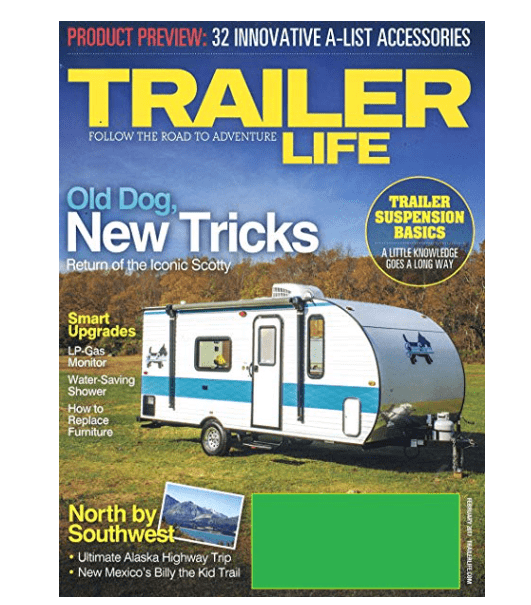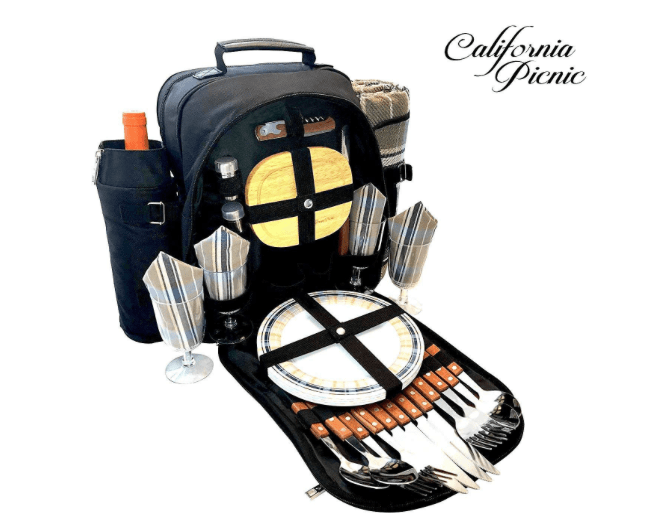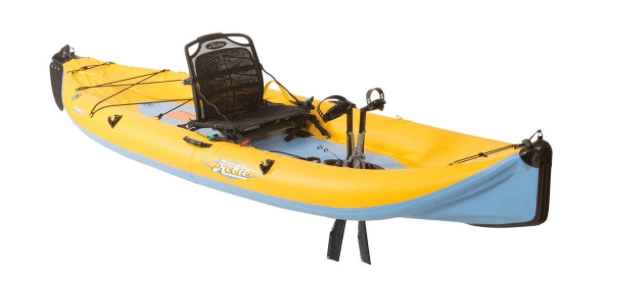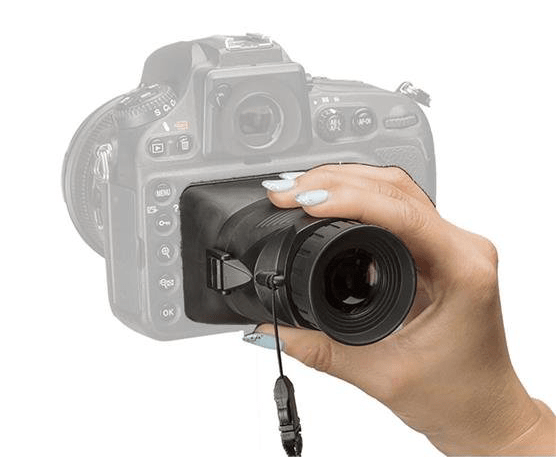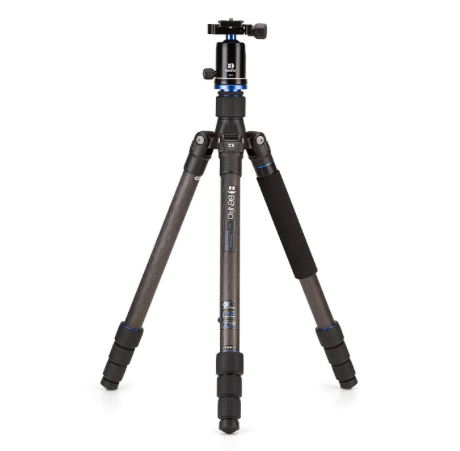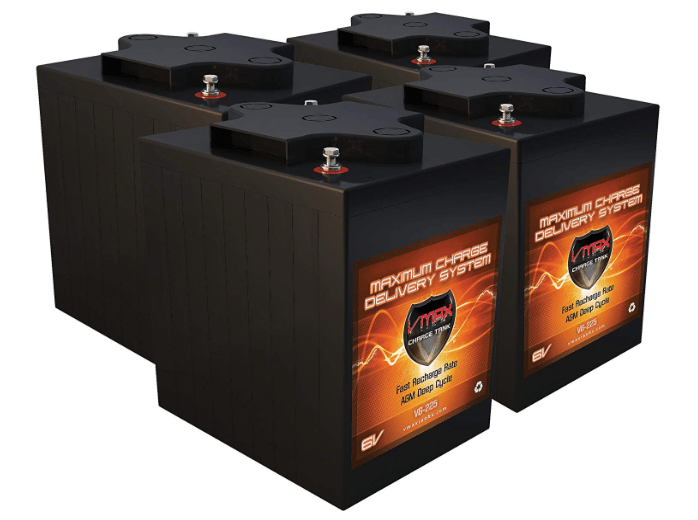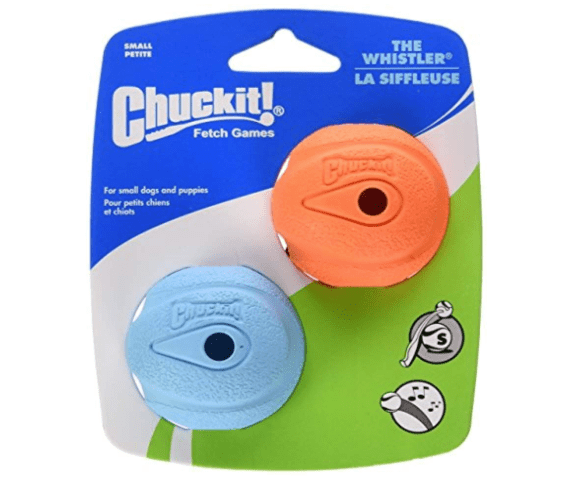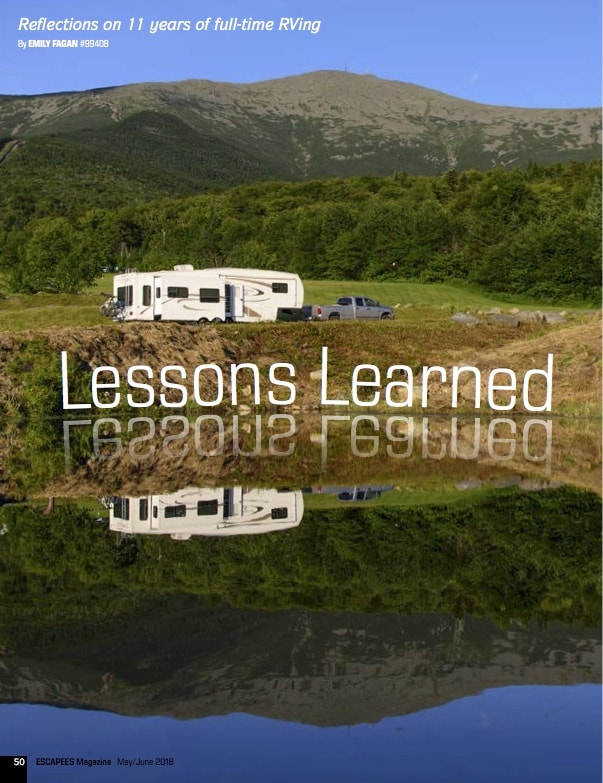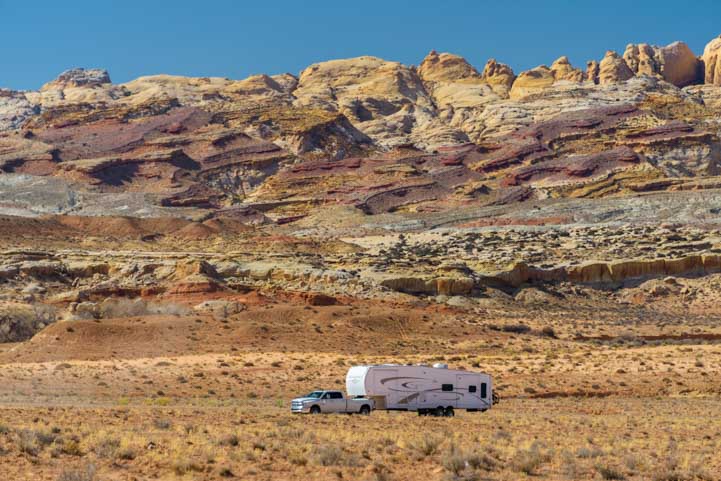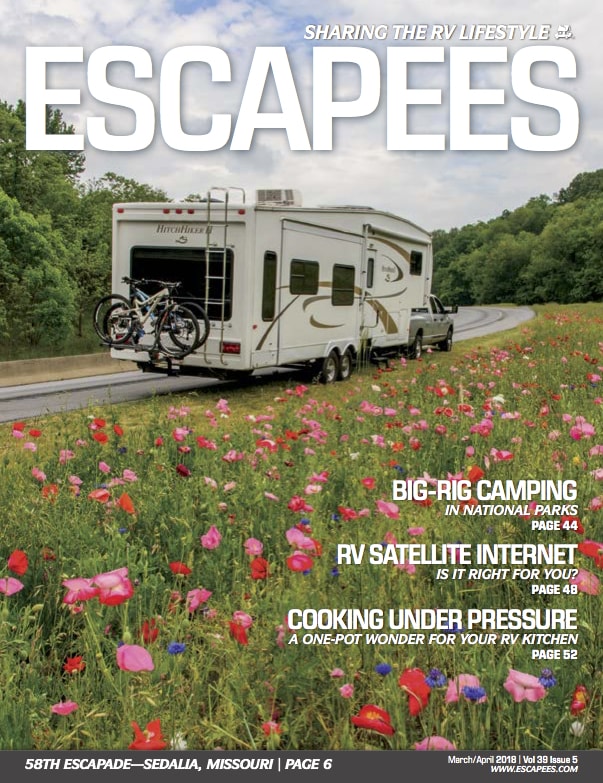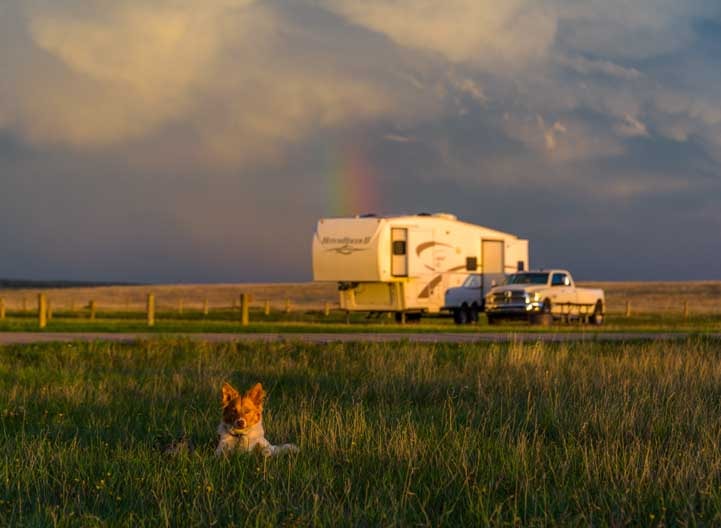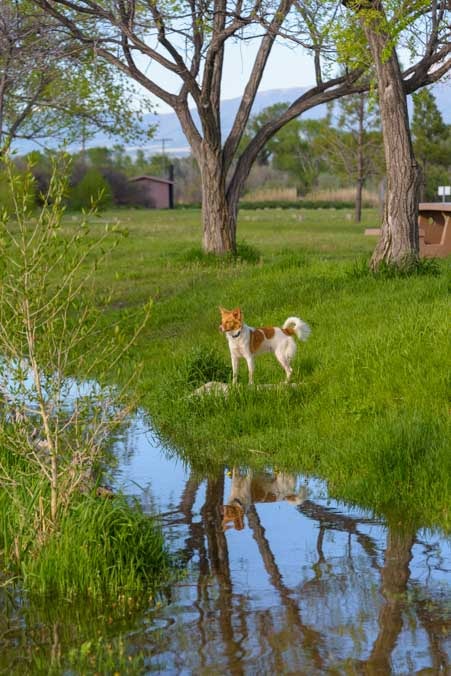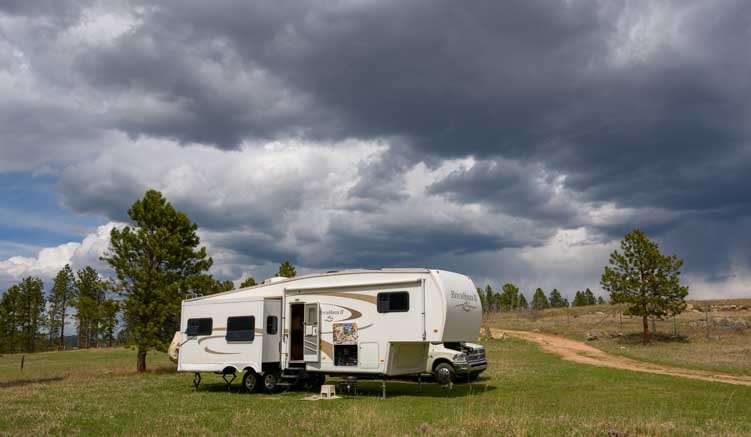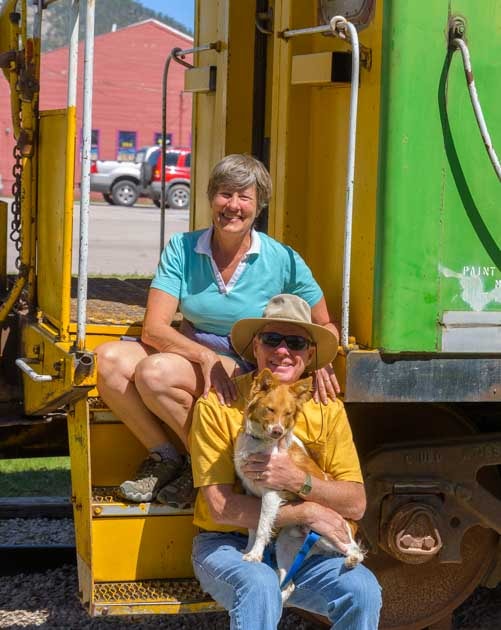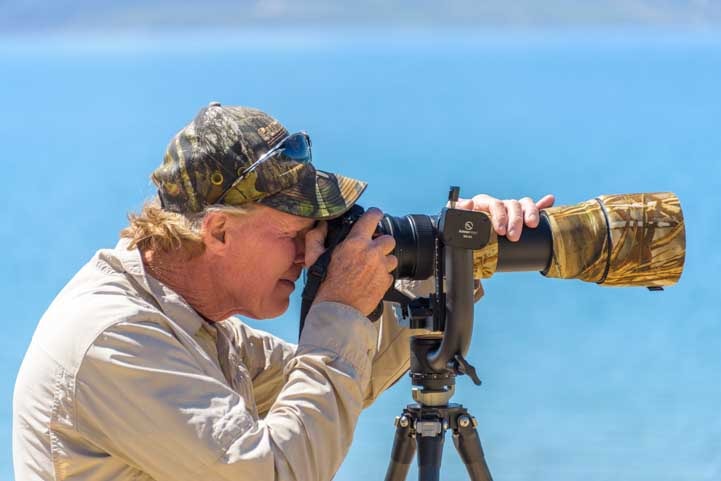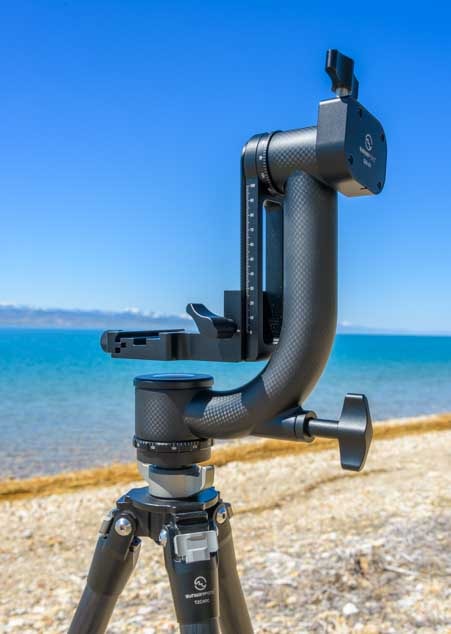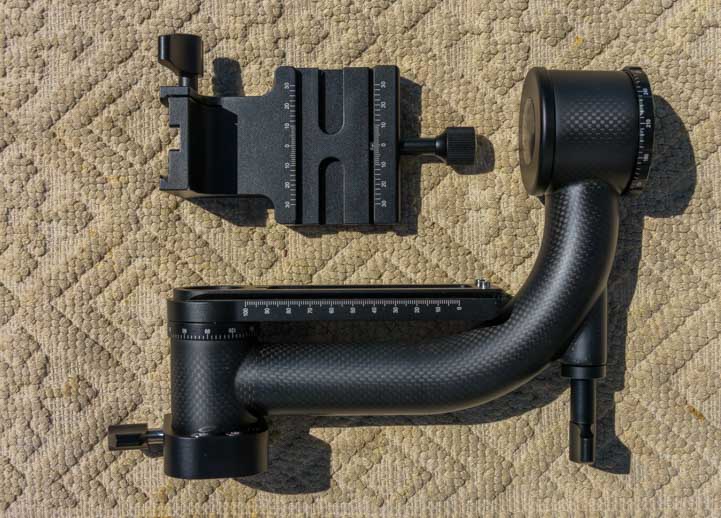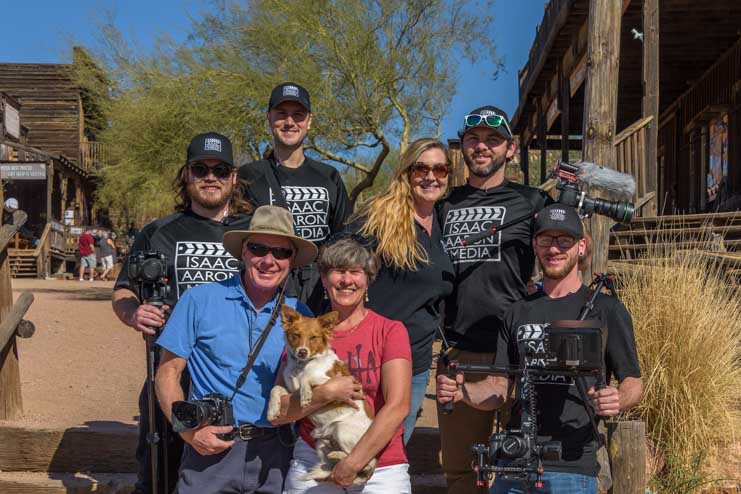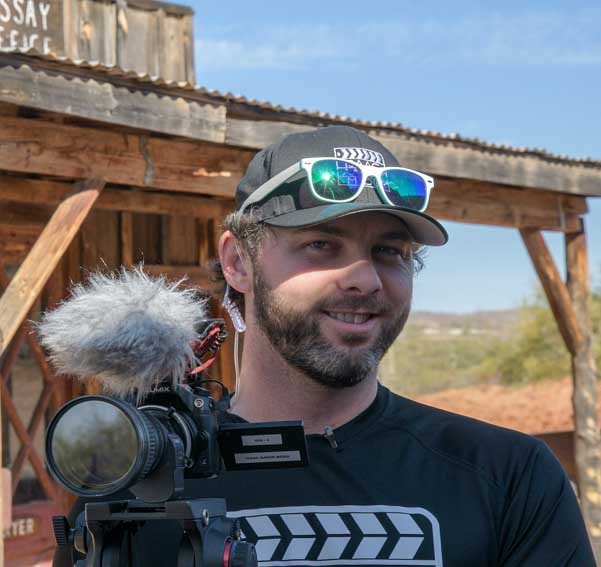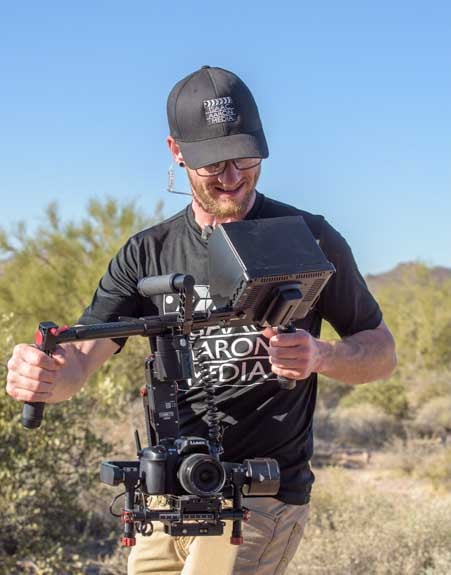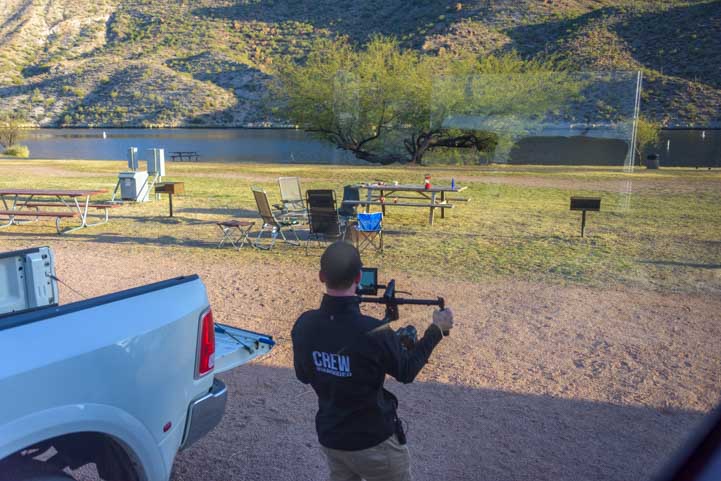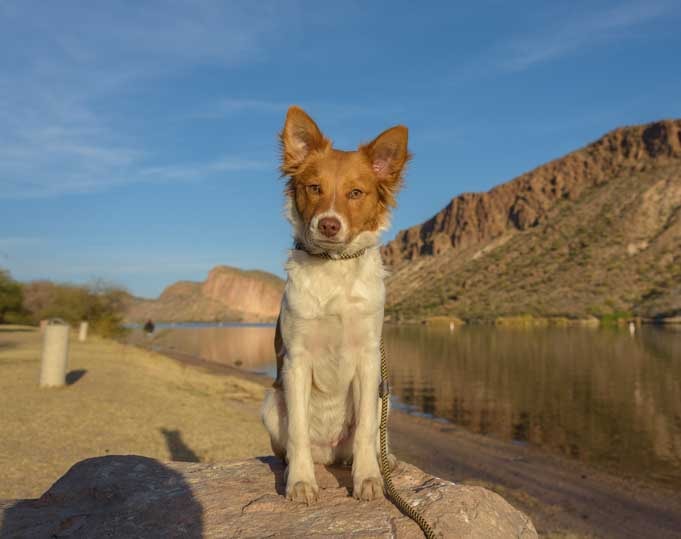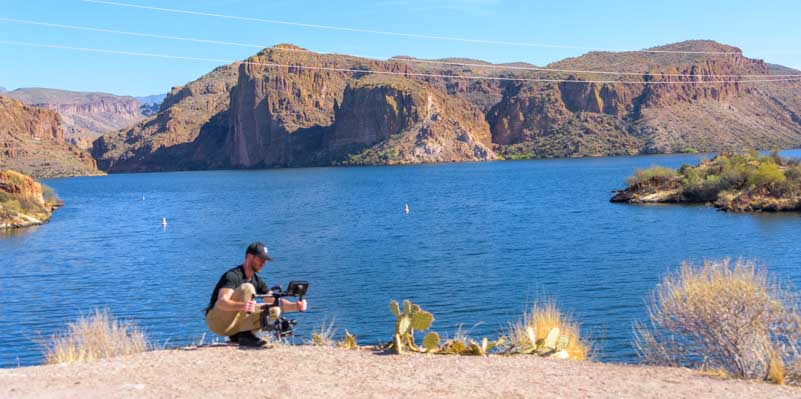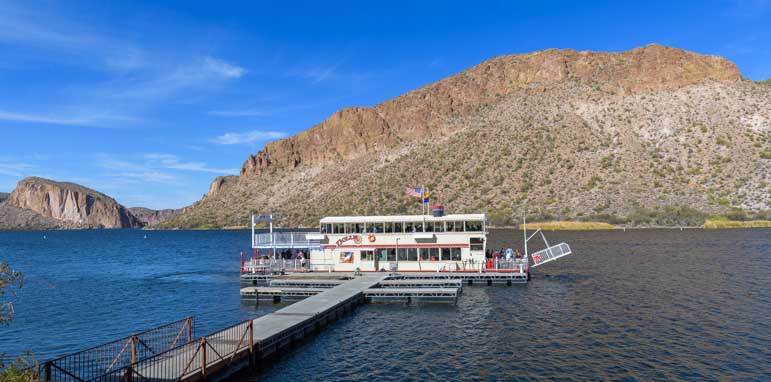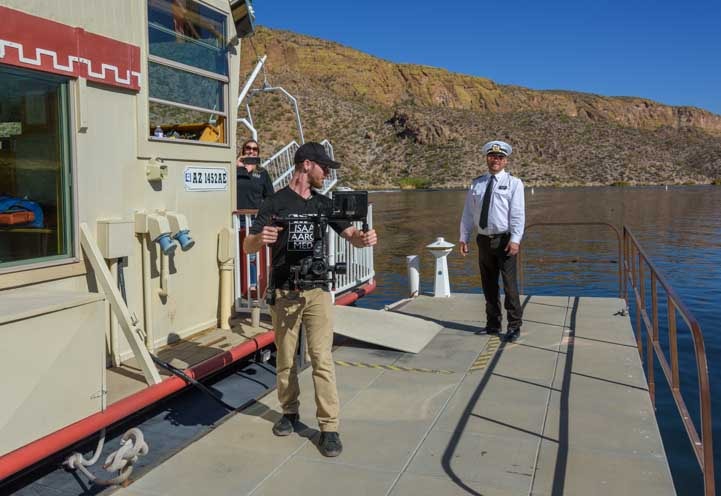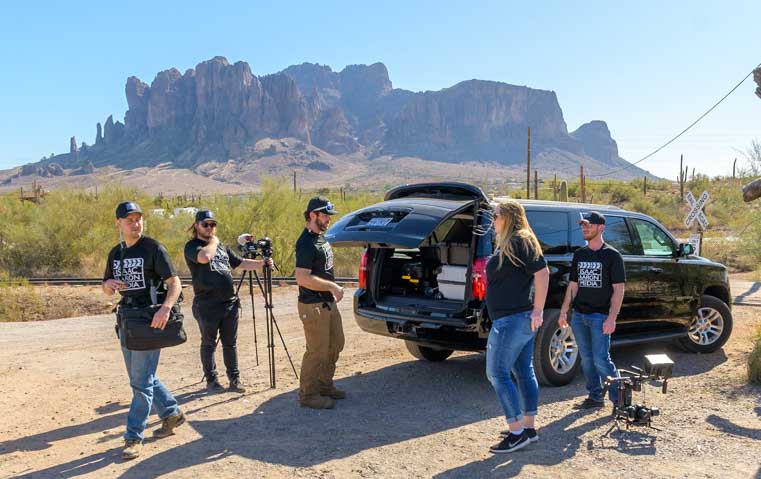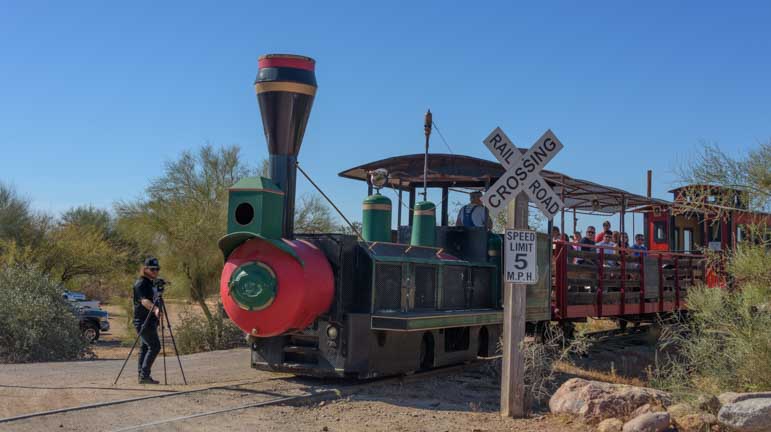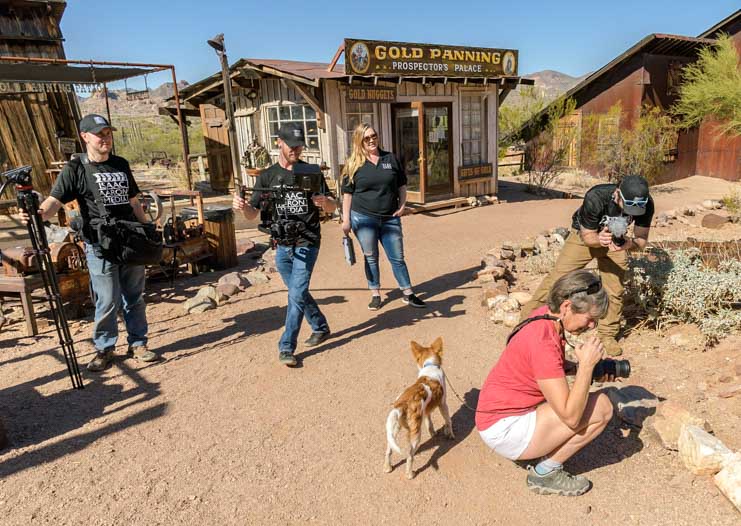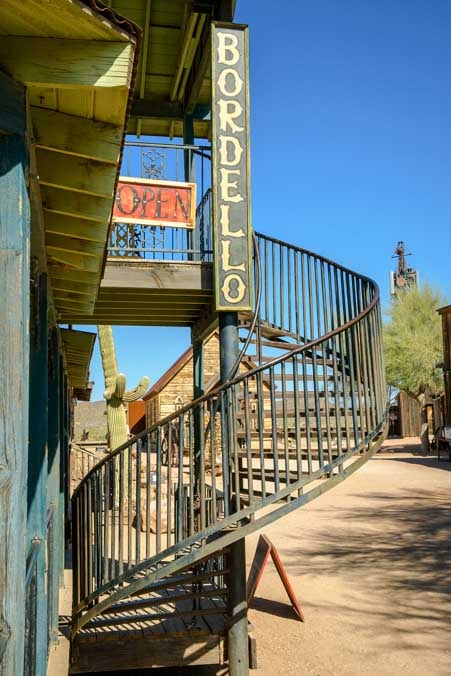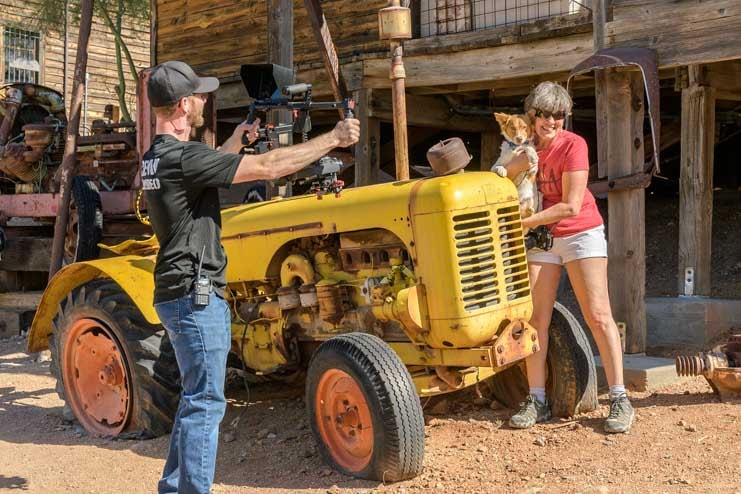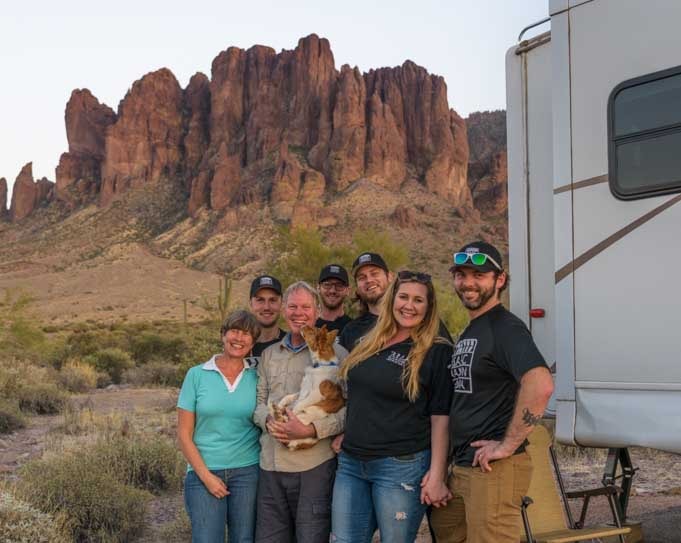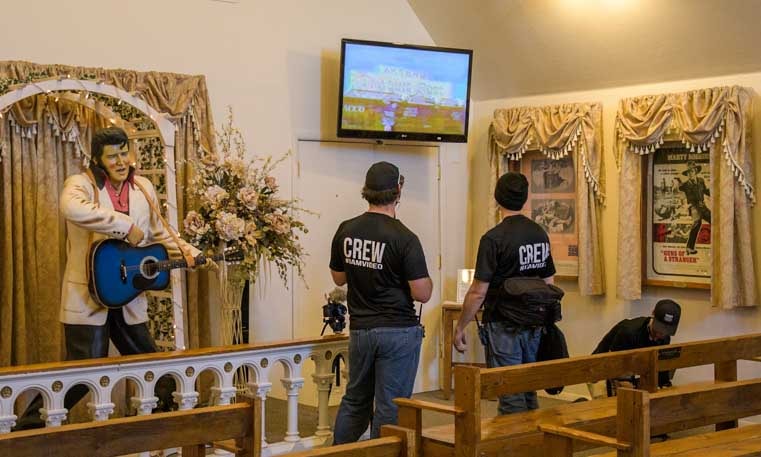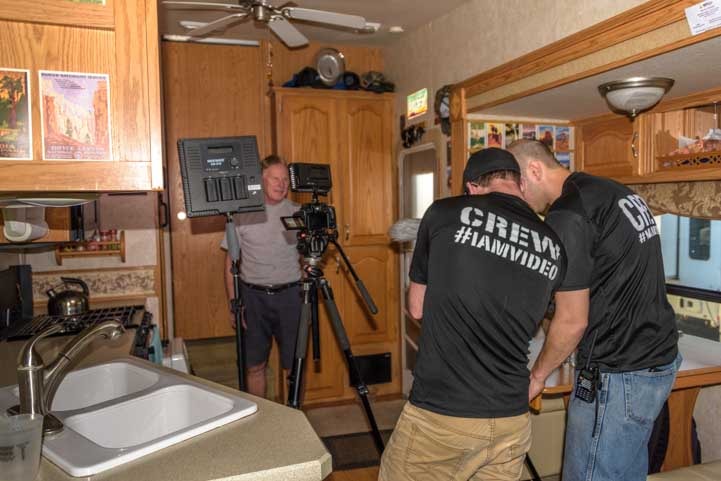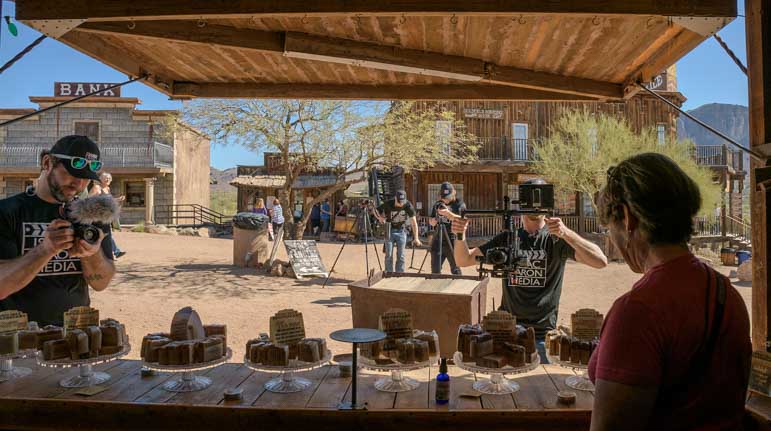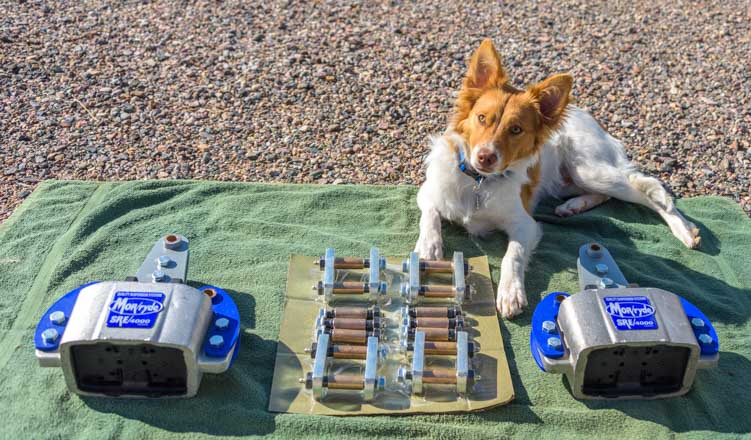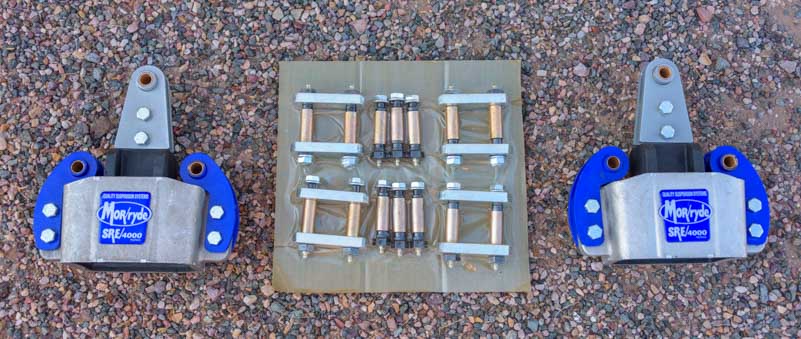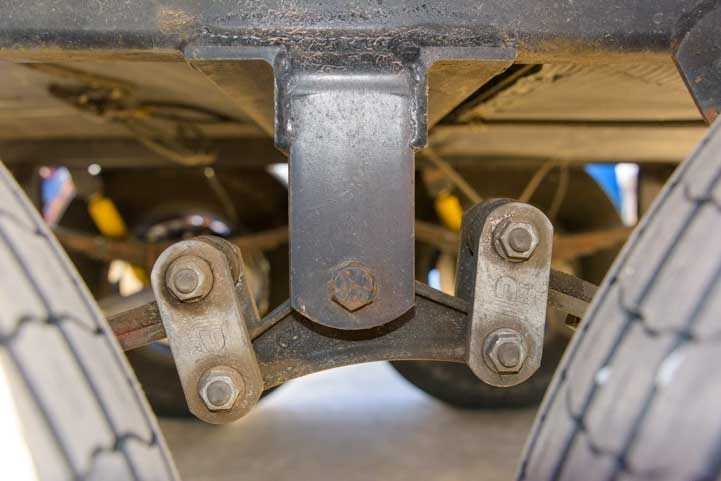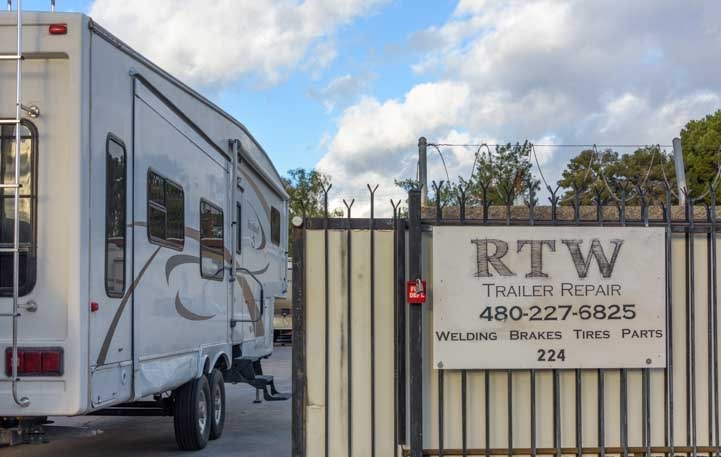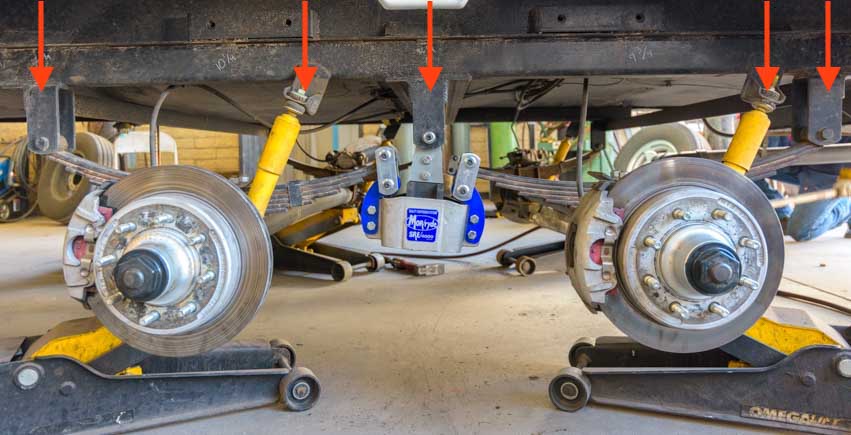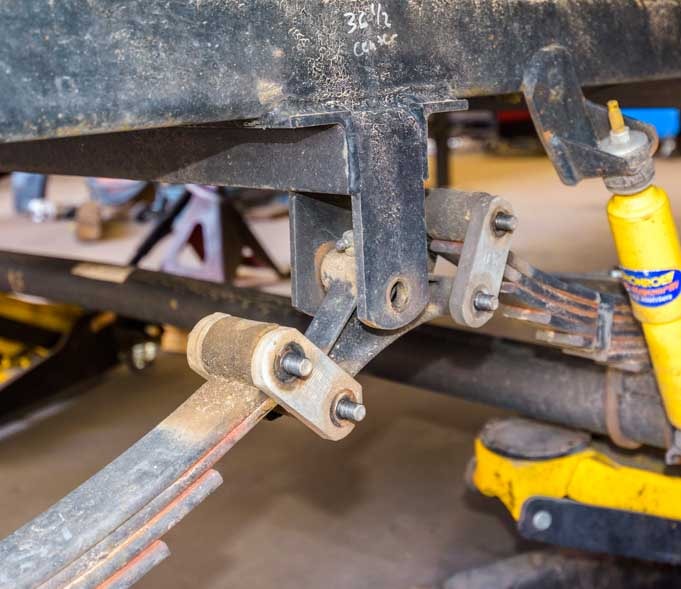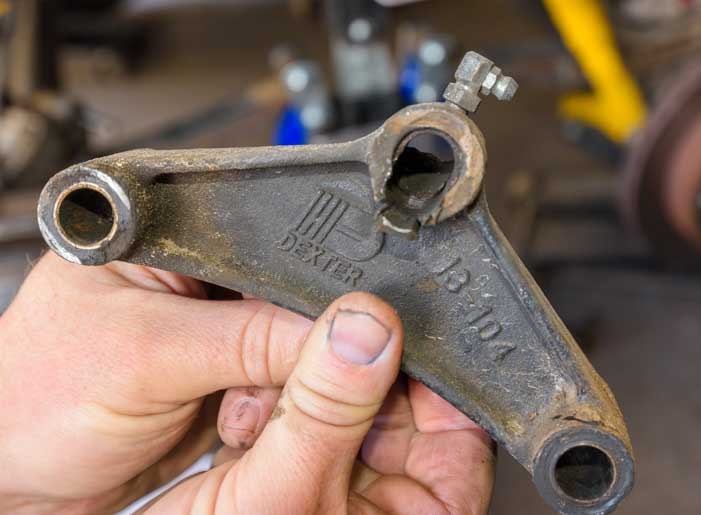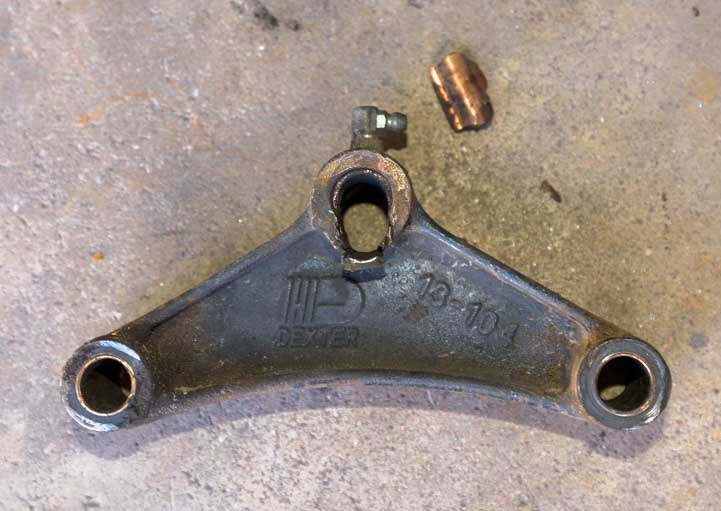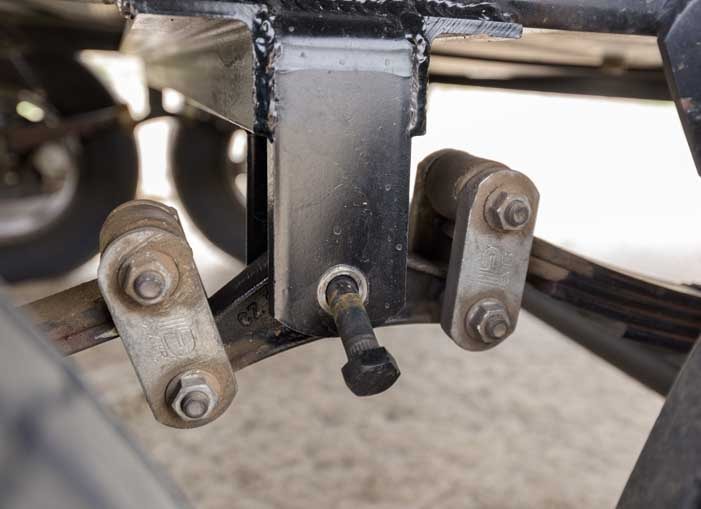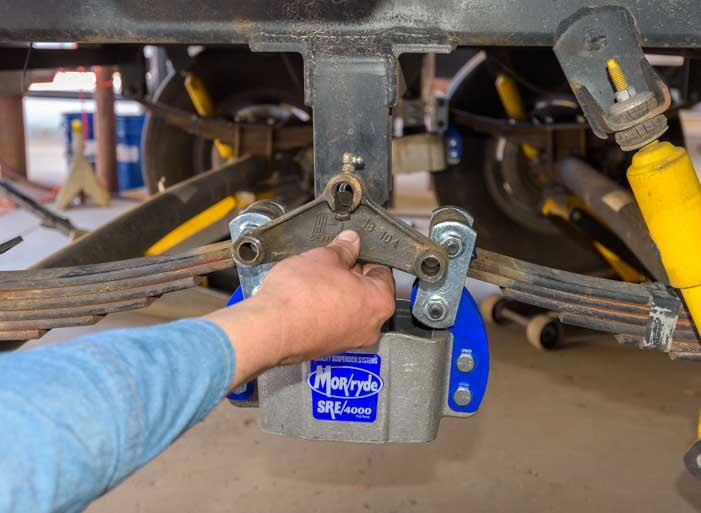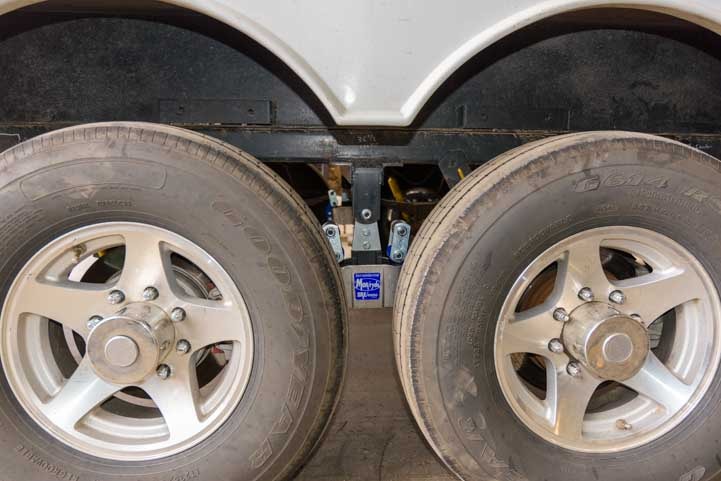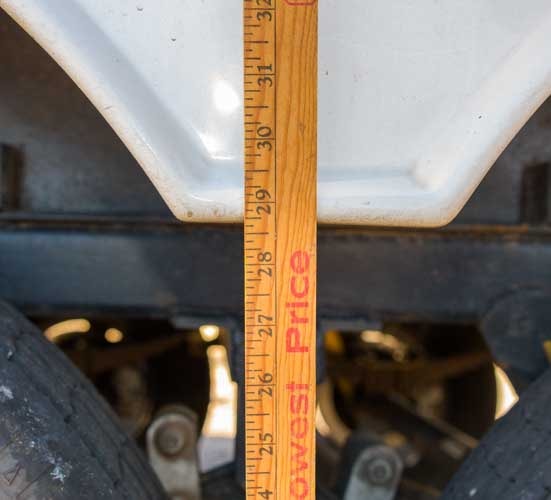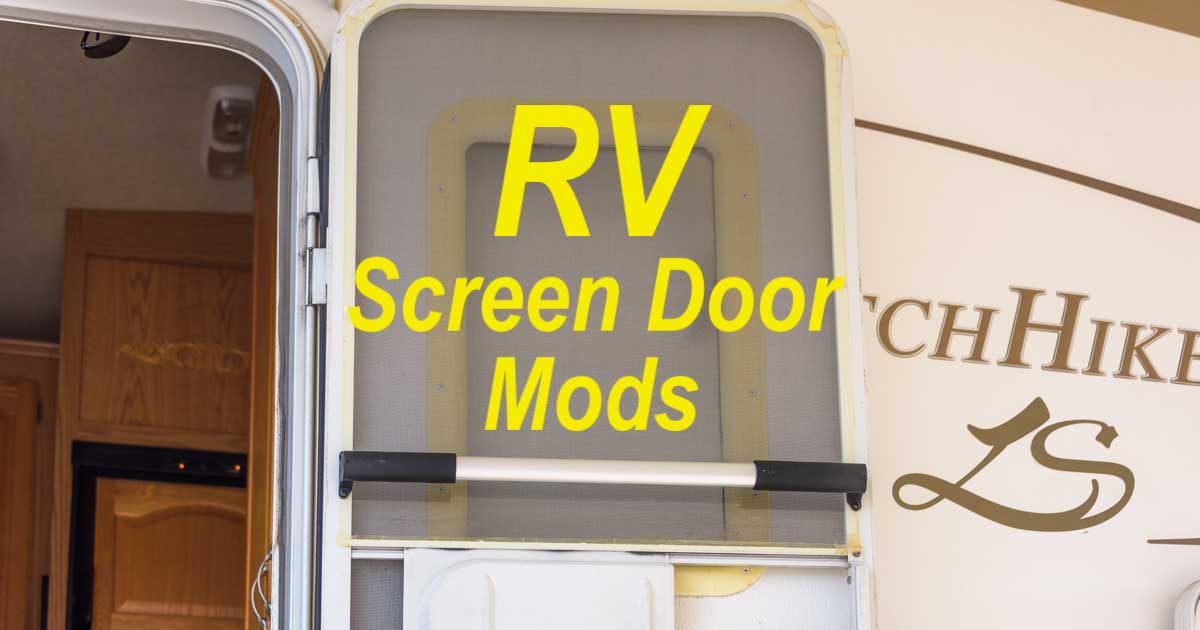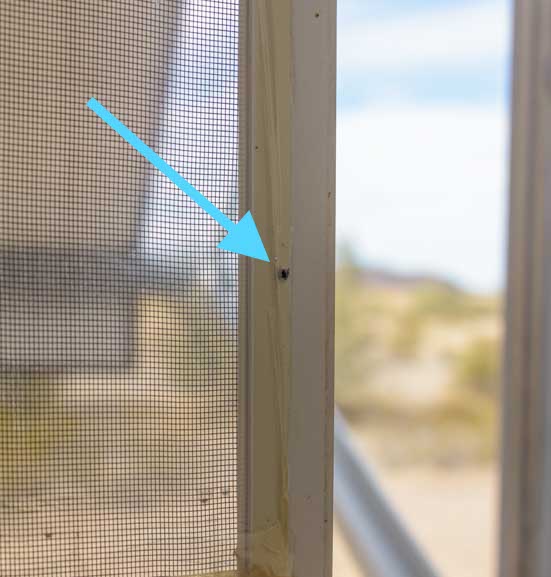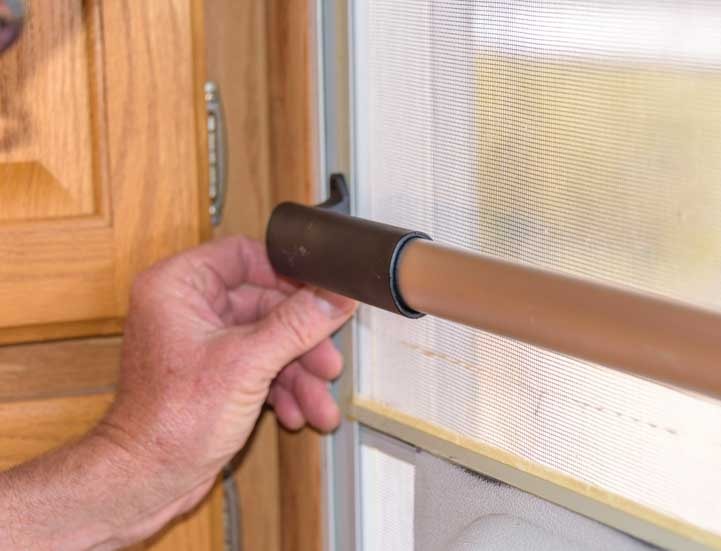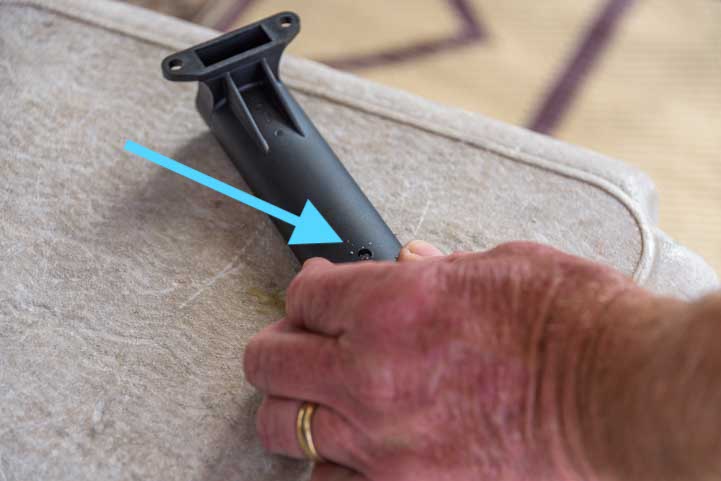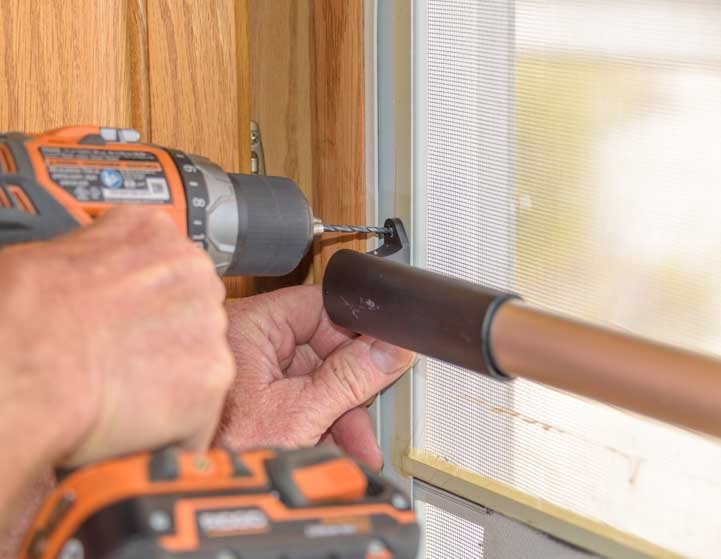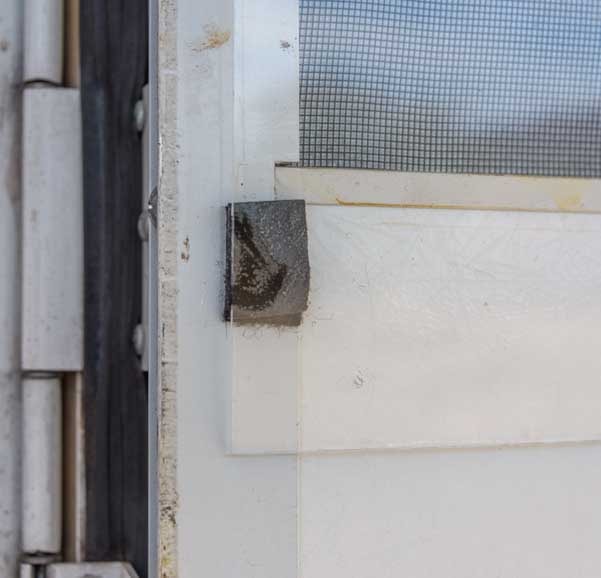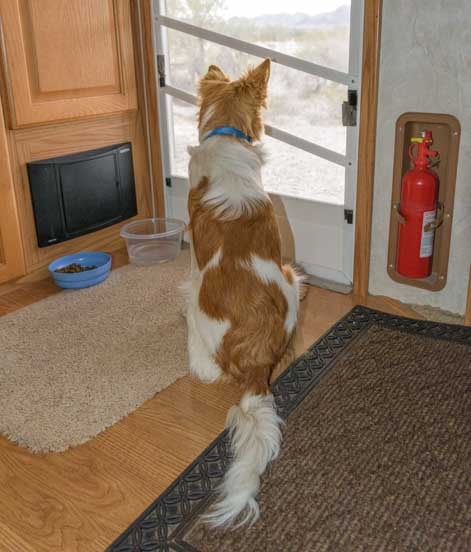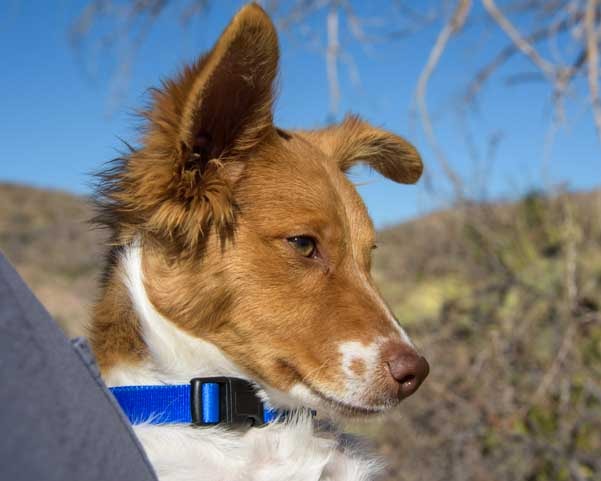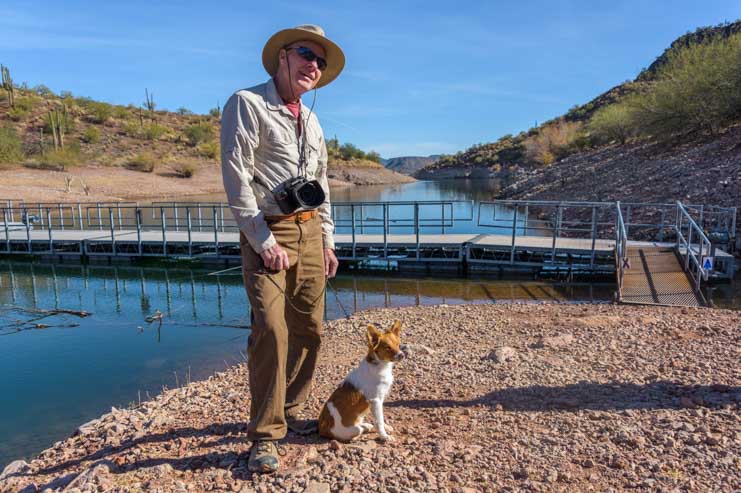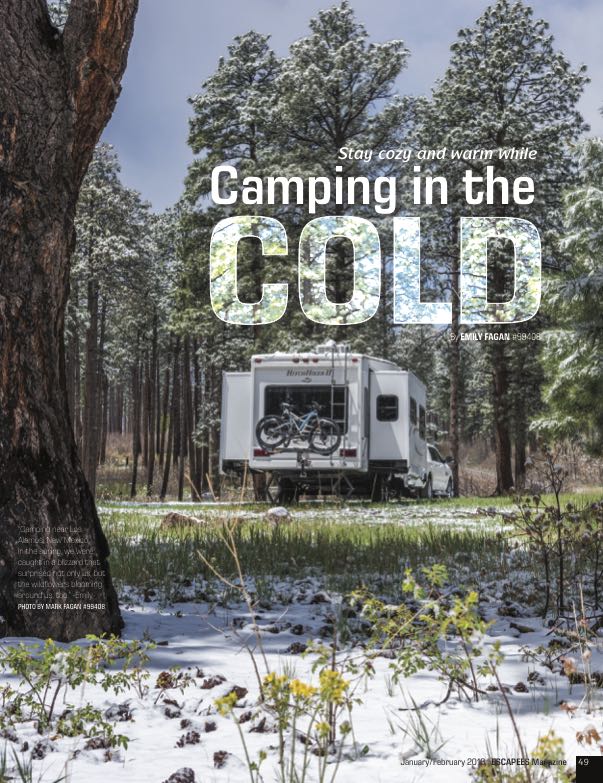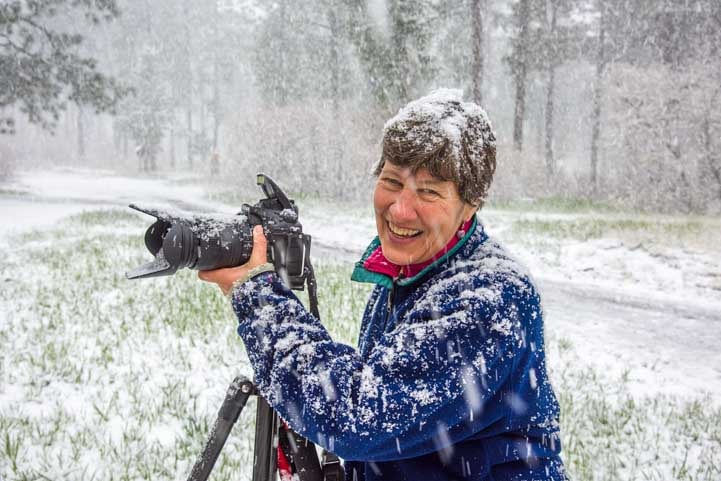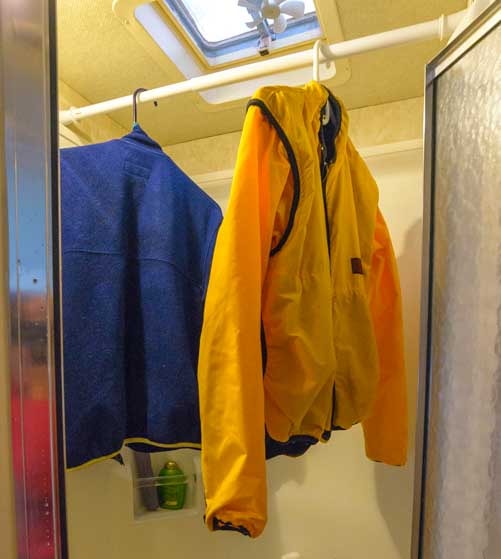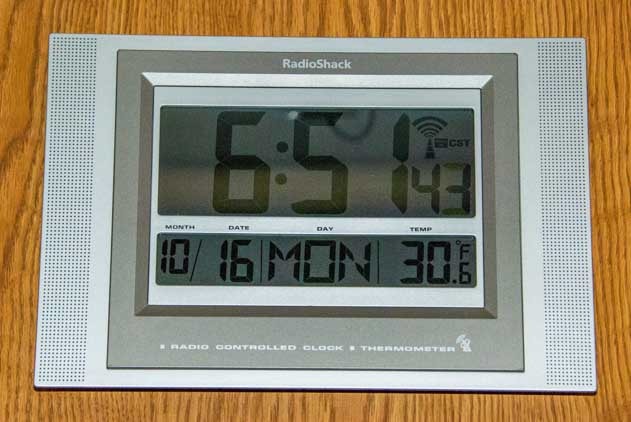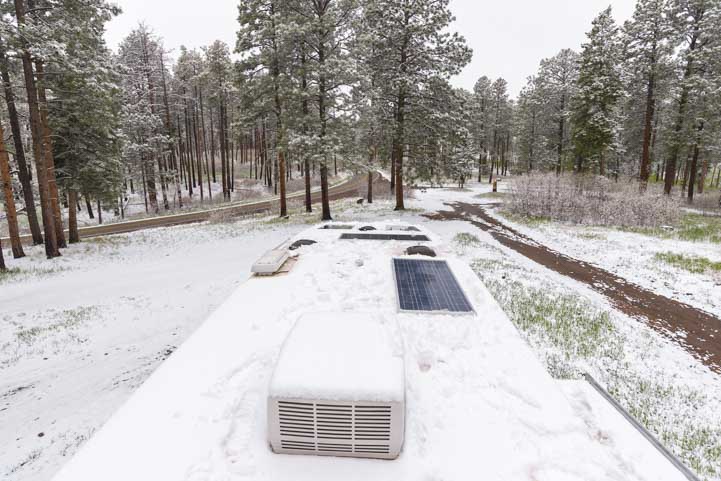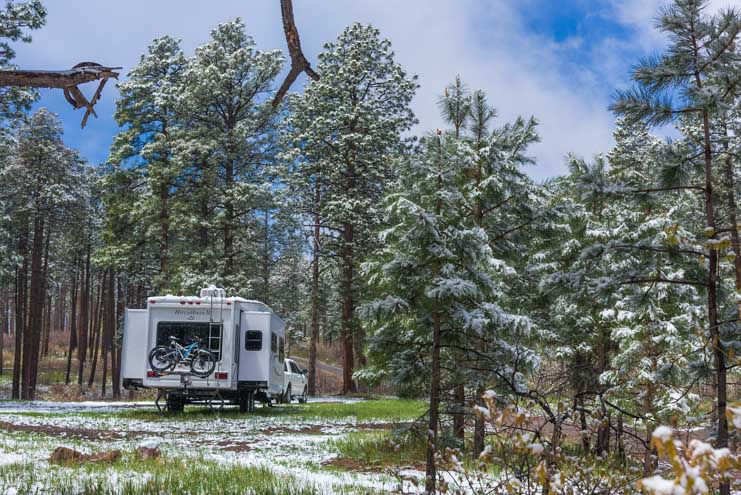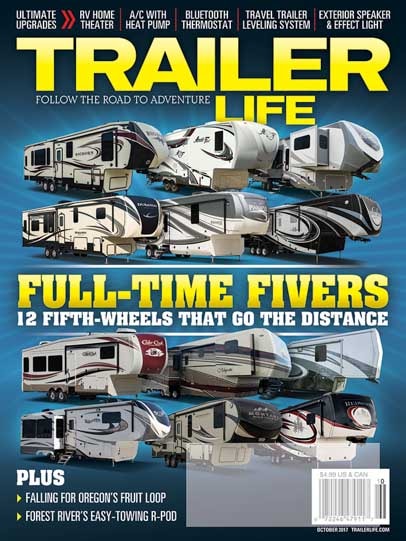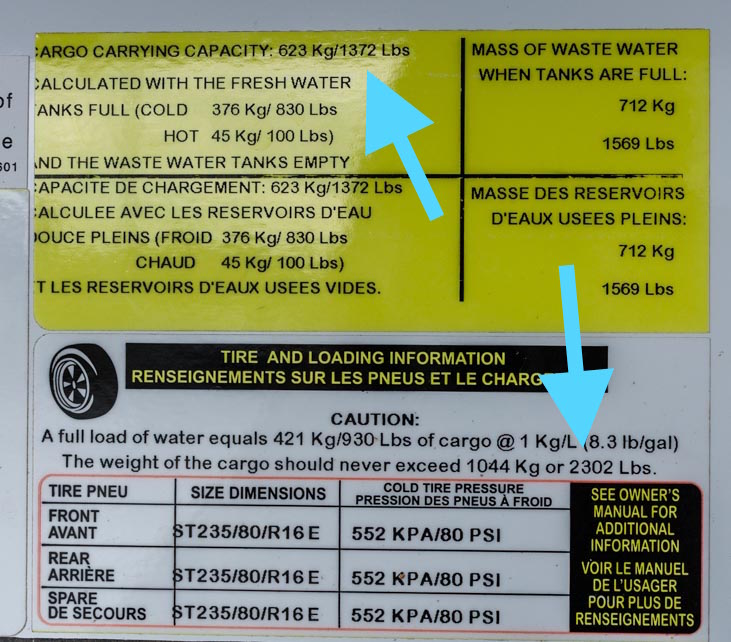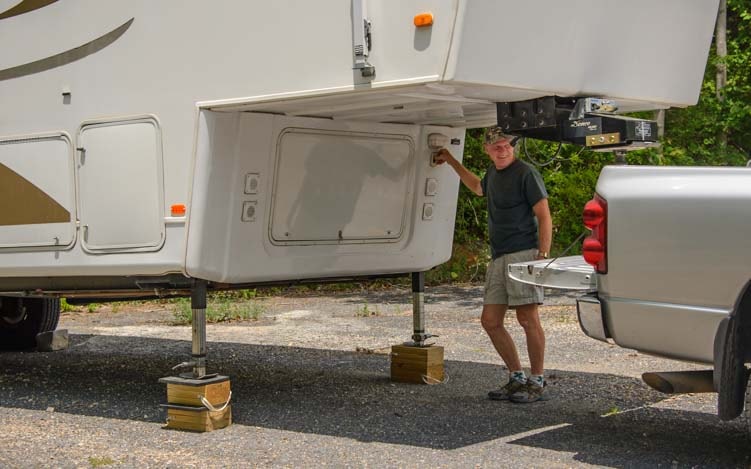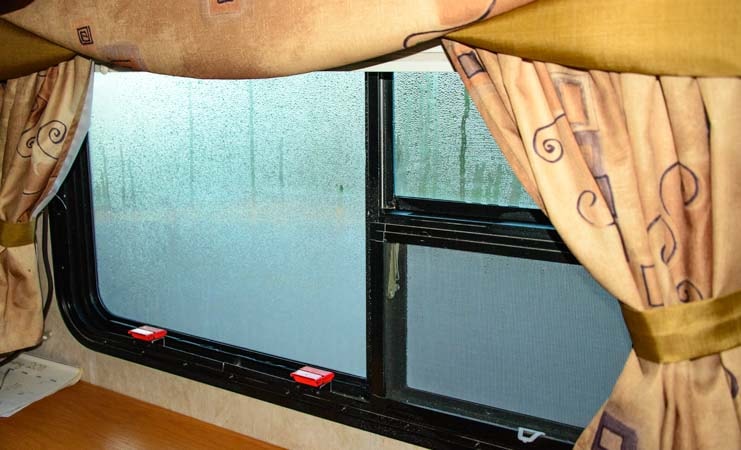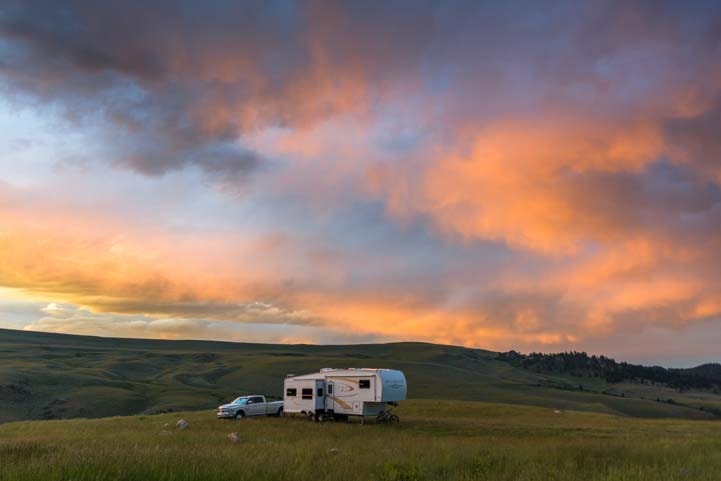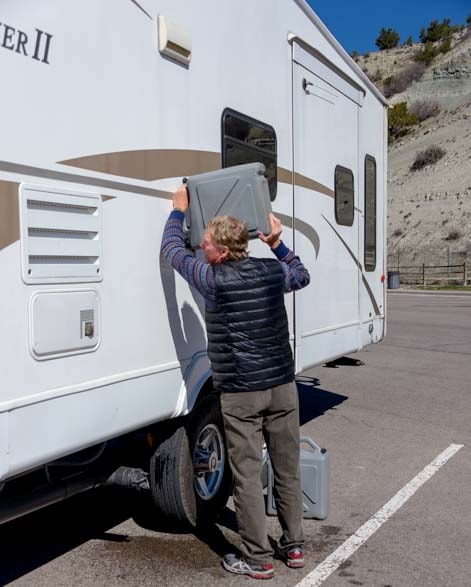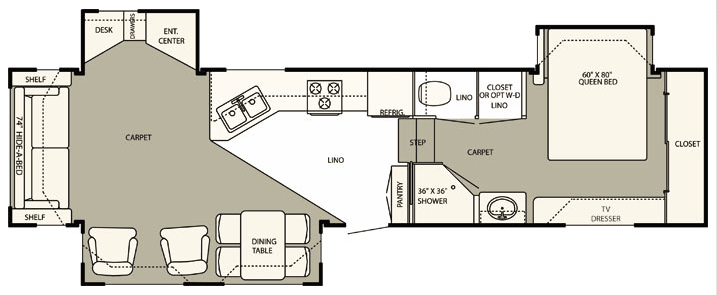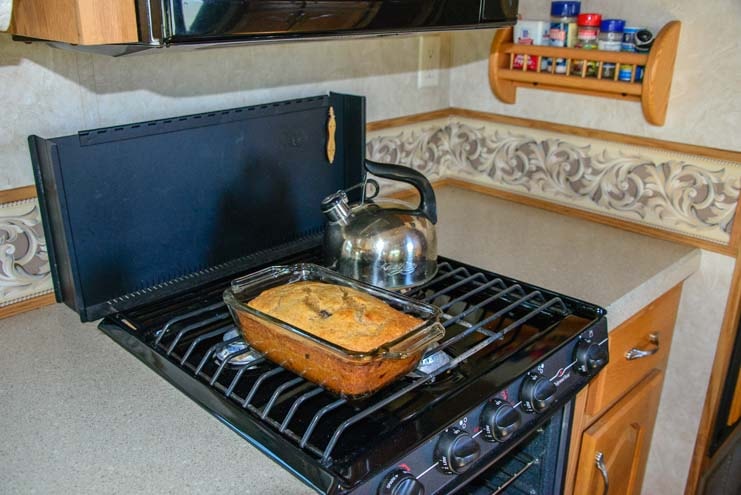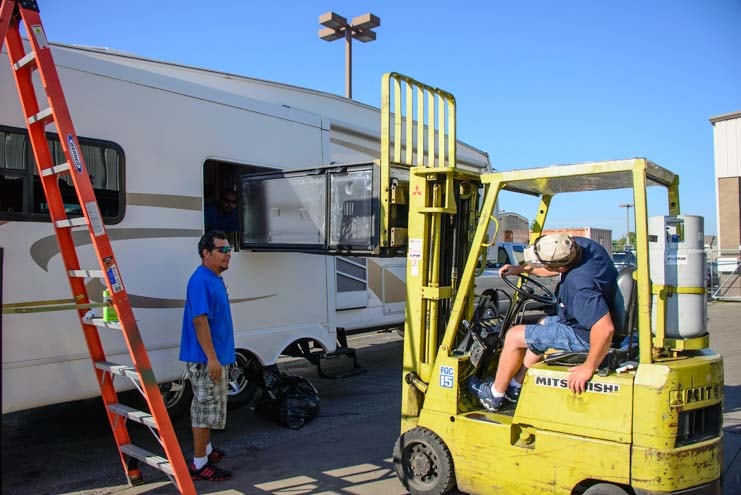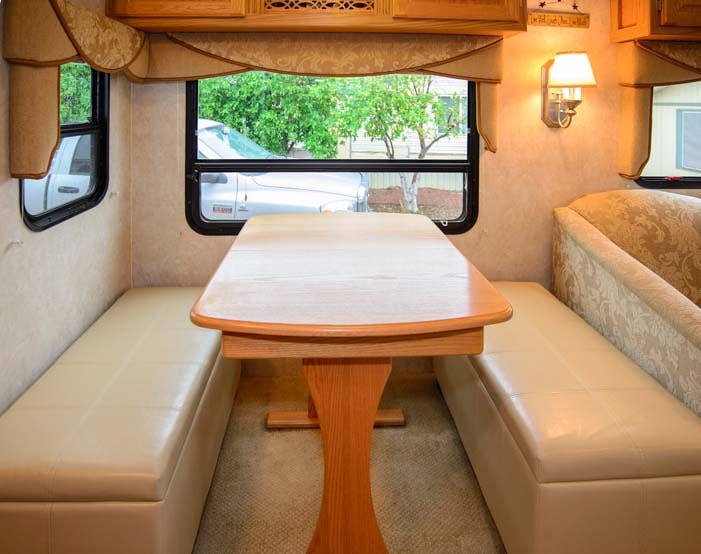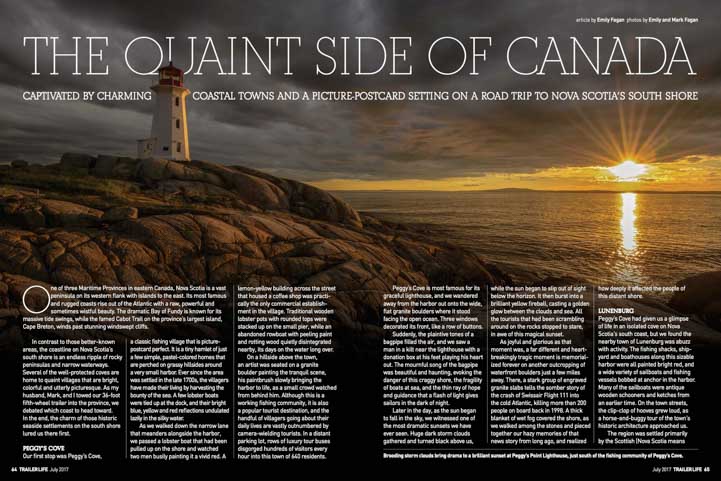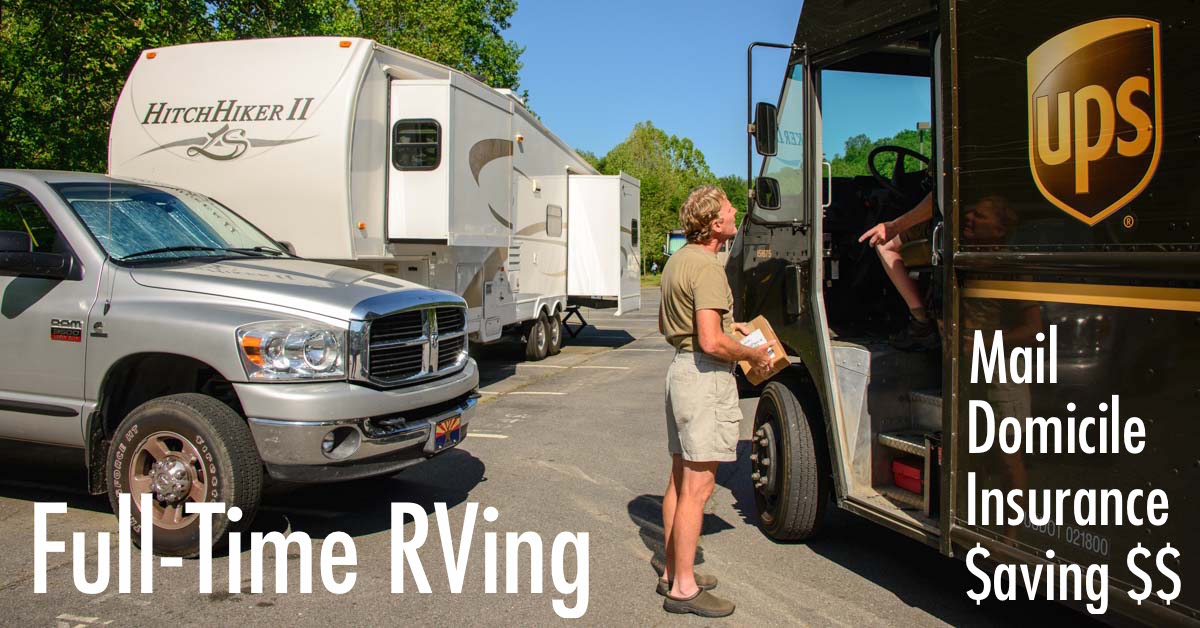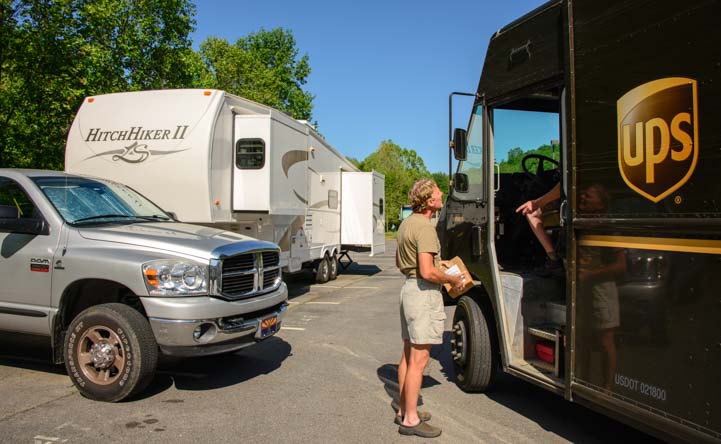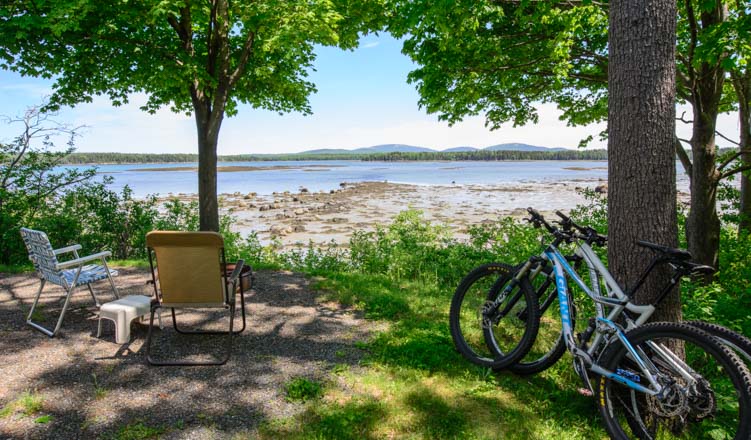The other day when we were at a hardware store we heard Christmas music playing. Yikes! The holidays are on their way and it’s time to start finding meaningful gifts for our loved ones.
The fun thing about buying for RVers is that there are so many super cute RV themed goodies out there!
Last year I wrote the blog post “50 RV Gifts” which was chock full of wonderful suggestions for gifts. This year I’ve done a little more digging and put together a lineup of 101 more great RV gift ideas for you. Click on any image or text link to see more detailed info about each one.
Many of these items are things we use in our day-to-day RV lifestyle and others are things that look enticing and have received great reviews and might end up in our RV sometime soon!
The first one is special to us because it is a 2019 Arizona wall calendar that features a gorgeous photo Mark took in Canyon de Chelly. His photo appears both on the cover of the calendar and on the January page.
We often choose the places we want to visit based on photos we have seen, so what better way to get inspired for next year’s RV travels than to flip through a book of beautiful photos from the National Parks. National Geographic’s National Parks Illustrated History is a good one, as is the book Treasured Lands – An Odyssey Through the National Parks.
If you are looking for travel tips for visiting the National Parks, the Fodor’s Complete Guide to the National Parks of the West is a excellent.
One of our favorite things in our RV travels is enjoying the many stunning scenic drives that zig-zag all over the country. To find out where the best scenic roads are, check out National Geographic’s Guide to Scenic Highways and Byways.
There are 120 more spectacular road trips in the book The Most Scenic Drives in America.
Gorgeous coffee table books are wonderful, but if you want to share the experience and get inspired over popcorn with your life partner, how about watching the Ken Burns video, “The National Parks – America’s Best Idea (download)” (DVD).
As long as you and your sweetie are plopped down in front of the TV, you might get a kick out of some old westerns. After we’d been traveling the west for a while we began noticing that we recognized the locations where many westerns were filmed, and it’s great fun to guess and then check the credits or the internet after watching the movie to see if you got it right!
We especially love the old John Wayne and Clint Eastwood westerns, and these two collections have many of our all-time favorites: the John Wayne Western Collection and the Clint Eastwood Collection and Double Feature combo.
We love to have low lighting in the rig when we’re watching a movie at night or to give the rig a romantic and relaxing atmosphere. We’ve had a set of flameless LED wax candles for many years now, and we love them.
A cute welcome mat at the door is a delightful way to welcome guests into your rolling home or to put a smile on your face when you come home from a day of errands.
If you’re in your RV for the holidays, one lovely way to decorate for the season is with a small tabletop battery operated Christmas tree.

Mini tabletop Christmas tree that’s battery operated – A great way to bring holiday cheer into an RV
If you don’t want to store a tree during the rest of the year, then a small vintage trailer that lights up and plays music might be a nice choice.
For RVers who have a regular size tree, a sweet RV Christmas ornament will bring back memories of happy times on the road.
A throw pillow or two on your couch or bed can make your rolling home even more homey. If you swap out just the pillowcase on a single pillow you can rotate the decorations so they don’t get old.
Next time you take a shower, why not dry off with a Happy Camper towel??!!
And when you’re ready for bed, you can slip into a soft set of “RV There Yet?” pajamas for women or camping PJs for men.
As the winter nights get cold, how nice to snuggle up with a unique camper-under-the-moon throw blanket (comes in various sizes).
Or wrap the fuzzy side of a throw blanket close around you as you drift into dreams of hitting the road in a cool retro RV.
If you spend winters in your RV, no matter where you are in the country there will be some chilly nights. Nothing beats a down comforter for staying toasty warm under the covers!
We’ve got lots of tips for staying warm in an RV over the winter (check them out here, here and here).
One of the simplest tips for RVs that don’t have a winterizing option on the screen door is to cover the door’s screens with a shrink-wrap film. This transforms the door from delivering icy blasts of cold air to bringing in the warm sunshine without a frosty bite, and it takes just an hour to install (step-by-step instructions with photos here).
A vent-free propane heater can heat your rig in minutes. If you’re intimidated by the process of installing one, a portable Mr. Buddy heater will deliver just as much heat as one that’s permanently installed without being connected to the RV’s gas lines.
Tips for how to install a vent-free propane heater here.
Fortunately, we have our own very special Mr. Buddy to cuddle with under the blankets. He’s a great little portable heater!

Our own little portable Mr. Buddy heater 🙂
If you’re outfitting a new-to-you RV, you can transform the interior on a cold blustery night with a blue flame fireplace. Rather than an industrial looking blue flame in a metal box, this fireplace comes complete with logs, yellow flames that deliver a lot of heat, and a pretty wooden mantel.

If you have the space, how awesome to have real flames in a real fireplace that gives off real heat!
Friends of ours installed the arched propane fireplace insert without the wooden mantel in their 2005 Alpenlite fifth wheel and then trimmed it out with ceramic tile. This created a wonderfully cozy and inviting addition to their living space!
We will definitely do this if we ever get another rig. One tip: install the fireplace insert so it sticks out about 3″ or so from anything above it like cabinets or a TV. Heat rises straight up, so just a few inches is enough to keep the blue flame heater from heating anything above it, but if you install the insert so the front of it is flush with the cabinetry above, the cabinets will get warm.
More about vent-free propane heaters here.
And, of course, the simplest way to add the romance of a fireplace to your RV is to play the Fireplace DVD on your TV. Whenever we do this, we find that the person sitting closest to the TV gets warm on that side. There’s something about those pretty flames and crackling log noises…
No matter how you heat your RV or house in the winter, you’ll be reaching for sweaters and sweatshirts when Jack Frost comes around. Here’s a fun sweatshirt for your sweetie.
She might want to peel off the sweatshirt sitting around a toasty campfire. But, of course, what happens at the campfire stays at the campfire!
And if you’re out and about in sunny places and need a good cover, there’s a Happy Camper ballcap for you!
A wonderful stocking stuffer for your best gal might be a pair of RV earrings or here’s another style here.
Or a cell phone ring holder (just as long she’s not married to her phone!).
Now, when you’re out RVing with the family, you can prevent any unexpected rainy days from dampening the experience if you bring along the National Parks edition of Monopoly.
If the rain persists and you’re stuck in the RV for a long time, another game, Trekking the National Parks, would also be a welcome diversion.
For kids (and kids at heart) who love coloring, a National Parks Coloring Book is a nice way to get to know a little about all the different Parks (there are others here and here).
And for anyone doing the National Parks Junior Ranger program (kids or adults!), the Junior Ranger Activity Book could be a nice complement to the National Parks program.
Parents who read aloud to their little ones or that are helping young readers learn to read will love the book “A Camping Spree with Mr. Magee.”
While the kids are busy playing games, coloring and reading, the baker in the family might pop some freshly made cookies out of the oven. How nice to have an oven mitt and pot holder specially made for RVers.
And whoever gets dish washing duty will enjoy the job a lot more if there’s a cute RV dish drying mat to lay the dishes on!
One kitchen goodie we LOVE and have had ever since we cruised Mexico on our sailboat is a set of Magma Nesting Cookware. These pots and pans fit neatly inside of each other and are heavy and durable. They are ideal in any kitchen where shelf space is at a premium, from vans to Class C’s to truck campers to teardrop trailers to popup tent trailers.
Another kitchen gadget we use every day is our Melitta pour-over filter cone and paper filters. I’ve been making coffee this way for 45 years. Simply place the filter cone on top of your coffee mug, boil water in a kettle and pour the water over the grounds in the filter and let it dribble into the cup below.
It makes a gourmet cup in minutes, the cleanup is a cinch, it takes up minimal storage space, and it doesn’t require electricity to operate.
Once you hit the road again after the holidays are over, the navigator in the family will appreciate the 2019 Rand McNally Road Atlas (we have several of these from various years!).
If you will be taking your RV over any mountain passes, both the navigator AND the driver will appreciate the Mountain Directories for RV and Truck Drivers. There are two volumes (for East and West), and we have turned to these books dozens of times before tackling a mountain pass.
Every pass is described in detail for traversing it in both directions, so you’ll know ahead of time what the grades will be and for how many miles and also how sharp the hairpin turns will be as well (i.e., 15 mph curves, 25 mph curves, etc.). Once you “know” what an 8% grade for 3 miles feels like or how your RV (and you) react to navigating a 10 mph uphill turn, these books will be immensely helpful in route planning.
Here are some tips for driving an RV in the mountains too.
Another trip planning tool we use a lot are the DeLorme Atlas & Gazetteer map books. Each one lists the highlights and hot spots in every state in an easy summary form, and the various public land borders are clearly marked.
We have one of these atlas books for every state we’ve visited. Another similar atlas series is by Benchmark and we have a few of those too!
A nice combination of travel destination ideas and RV maintenance tips and new RV reviews can be found in Trailer Life Magazine and Motorhome Magazine. I’ve been fortunate to have had many articles appear in both magazines, and a subscription can make a nice gift (we’ve given several over the years!).
Most full-time and seasonal RVers belong to Escapees RV Club, and a one-year membership makes a great gift.
Membership includes an excellent bi-monthly magazine that is written by RVers for RVers. There are also a myriad of other terrific offerings, from discounts on camping to Bootcamps for new RVers to webinars and an online RV University to elder care for RVers who have hung up their keys to a division dedicated to Gen-X and Millenial RVers to mail forwarding services and many RV campsite ownership possibilities.
We’ve been members since 2008. If you decide to join (here), please let them know “Roads Less Traveled” sent you!
If you love to write, as I do, as soon as you start adventuring you will want to begin recording all you’ve seen and done. And even though typing is faster than handwriting for a lot of us, taking a moment at the end of each day to make a few notes with pen on paper is very rewarding.
There are several excellent Camper’s Journals, Camping Log Books and RVing Journals available:
Even if you’re not a writer, it’s nice to have a visual display of the places you’ve visited, and an RV state sticker map is a fun thing to put on the RV door or wall.
While it’s fun to tick off where you’ve been and what you’ve seen, the essence of RVing to many is simply living in the moment and enjoying the blessings of life without responsibility or even accountability. Where better way to do that than in a hammock strung between two trees in your campsite?!
We met a fellow a few weeks ago who has a hammock in the garage of his toy hauler. He loves to open the ramp door to a beautiful view somewhere and swing quietly til he falls asleep.
Swinging in a hammock is also a great way to enjoy the wildlife that wanders in and out of a campsite, and hanging up a bird feeder or putting out a shallow tray of water is a good way to lure the critters in.
We love hanging a hummingbird feeder on the RV window vy our dining table. It attaches to the window with suction cups and we can sit inside and watch the antics of the hummers as they come and go at the feeder.
A simple solution of 1 part regular table sugar (no the fancy stuff) to 4 parts water makes a perfect nectar for these little acrobats.
If the antics of the hummers isn’t entertaining enough, then a game of Corn Hole will keep the folks at your campsite and even the folks at the neighbor’s occupied.
If you want to dress up your campsite, an RV themed tablecloth is a nice way to add some class to the picnic table.
And a pretty patio mat extends your outdoor space a lot. This 8 x 20 mat is a neat dimension that runs much of the length of the RV.
An outdoor grill is an absolute must for every RV, and there are dozens to choose from.
We still use the modest little “Sidekick” grill that came with our popup tent trailer. It is designed to be hung on an RV wall if you install the hanging bracket, or to stand up off the ground. Mark has barbecued many an outstanding meal on this grill and it’s still going strong after 13 years of very frequent use!
If you hang around outside a lot at night, it’s nice to have a lantern to hang in a tree or on the RV awning brackets. A battery operated Coleman LED lantern or solar powered lantern is a great way to go.
When we first started boondocking, we used kerosene lamps rather than burn precious electricity with our RV’s interior lighting. Hanging one or two of these lanterns inside at night would have been a whole lot brighter!
Many gadgets like this lantern are battery operated. Have you tried rechargeable batteries yet? In the last year or so we’ve switched to rechargeable batteries rather than buying new batteries each time the old ones run down, and we like them a lot.
Getting out in an RV is all about enjoying the outdoors, and a fun and romantic way to savor the fresh air and great views in some remote spot is with a picnic. There are lots of fancy picnic baskets on the market, but how about a picnic basket that is built into a backpack so you can hike with it comfortably, hands free?!
We use 100 oz. hydration packs when we do longer hikes, and we’ve like packs that hold a big camera, a tripod hung on the outside, and a light jacket and snacks. The Camelbak Fourteener series are great packs for this purpose.
Good quality hiking shoes are also important and we get new ones every year. We’ve both been wearing Oboz hiking shoes for the last few years and Mark loves his waterproof Oboz boots. He found them especially handy when we were trudging around in the rain and mud in Michigan’s Upper Peninsula recently to photograph the fall colors.
Along with hiking boots, we both keep a variety of high quality, toasty warm jackets in our coat closet. We prefer water-resistant fabric and we like high collars and good sized pockets too. You can usually find a North Face or Columbia jackets sale most times of the year, but the savings are typically better as winter transitions into spring.
One of the best ways to enjoy the outdoors is kayaking on a lake or river. The Hobie inflatable kayaks are FABULOUS and they can be rolled up and put away in an RV storage compartment.
Our Hobie inflatable tandem was a blast in both our RV and sailing lifestyles.
The beauty of these kayaks is that if you find yourself up a creek without a paddle it doesn’t matter: the kayak is driven by foot pedals and a rudder at the back.
This means you cruise along about twice as fast as an ordinary kayak totally hands free, and you can use your binoculars or camera as you go. (Read my full review here).
We also found that ours was as stable as a rock. I could stand up in it and wax the hull of our sailboat!
If your sweetie is a kayaker who dreams of the ideal ride, this is a gift he or she will love.
A while ago we bought a kit of cordless power tools by Rigid that included an impact driver and power drill.
Mark uses the impact driver for removing and replacing a wheel’s lug nuts on a flat tire (and we’ve had lots), and we both use the cordless drill to raise and lower our stabilizing jacks every time we set up or break down camp.
Rigid makes a lot of other tools that are all operated on the same lithium-ion battery packs as these two drills, and we recently got their little portable cordless vacuum cleaner. What a fantastic little vacuum! Because we now live with a puppy who hasn’t yet learned to wipe his paws when he comes in the door, I use this vacuum in the main living area almost every day.
The vacuum takes a bit more power than the drills, so we also bought an upgraded battery pack that has 5 amp-hours of capacity rather than the standard 1.5 ah. Even vaccuming as frequently as as I do, this big battery pack requires charging just once a month or so.
We highly recommend the Rigid kit even though it is considered a second tier brand. Dewalt has a similar kit too.
Another little “around the house” gadget we rely on a lot is our two-way radio set.
We use these to back up the trailer and also to find each other when we go on photo shoots. It also helps us stay in touch when one of us goes on a hike or walks the dog without the other.
Obviously, cell phones do this too, but these radios work everywhere we go regardless of cell tower proximity. We have the “36 mile” GMRS two-way radios which usually have excellent reception up to about 3 miles.
There are lots of great stocking stuffers for RVers, and one is a Leatherman tool that has a million tools neatly folded into a small pocket-sized package. Mark has the Leatherman Surge tool here:
Mark always carries a pocket knife too, and he has a collection of Gerber knives in drawers throughout our trailer as well as in his pocket! These are two of his favorites: Gerber Freeman Guide Drop Point and the tiny Gerber Ultralight.
He recently picked up another pocket knife made by Leatherman that is his latest favorite, the Leatherman Crater C33LX. It has a serrated edge and a caribiner that can attach the knife to a beltloop or keychain. The caribiner can also serve as an all important bottle opener come Beer Time!
Mark’s pockets are always brimming with goodies, and besides a pocket knife he usually carries a flashlight too. He likes the Lumintop brand and now has five different Lumintop LED flashlights and loves them all.
We’ve written detailed reviews of some of their models (the 4000 lumen tactical light here and two pocket flashlights here).
Here are two more, the Lumintop ODF30C 3500 lumen flashlight and the Lumintop AA 2.0 pocket flashlight.
Getting our heads out of the tool box and back out into nature, another outstanding gift that says “I love you” in a most heartfelt way is a brand new DSLR camera.
Nikons are the best rated DLSRs these days and the Nikon D3500 is an outstanding camera to start with. The Nikon D3500 kit that comes with two lenses is a great value.
If your sweetie already has a great camera, a fabulous gift that he or she will LOVE is the Hoodman Loupe.
This little device shrouds the image on the back of the camera so you can see the picture well in any light, and the optics are adjustable so no matter how good or poor your vision is, you can adjust it so the image is tack sharp.
We rely on our Hoodman Loupes to ensure that our images are in focus, our composition is what we want, and the exposure is correct.
Another wonderful gift for someone who loves photography is a high quality tripod. The Benro Travel Angel II tripod is light and easy to set up and has worked well for me, especially hiking, for several years. An easy-to-use tripod makes it possible to blur waterfalls and to take photos of the Milky Way and is also a wonderful tool for taking selfies.
The photographer in your life might also really enjoy some books that explain the nitty gritty about how to take beautiful photos.
Three books that have taught us a lot are Brenda Tharpe’s Creative Nature and Outdoor Photography, Tim Fitzharris’ Landscape Photography and Steve Perry’s Secrets to Stunning Wildlife Photography.
We’ve got loads more tips for learning how to take great photos here.
Sometimes the best way to get really beautiful photos of nature is to camp right out in it for long periods of time.
If your spouse has been pressing you to upgrade your RV with solar power so you can boondock for a while but you’ve felt a bit overwhelmed by the complexity or the cost of installing a system, a folding solar power suitcase can provide a lot of charging capacity and give you some excellent hands-on experience without requiring a scary big financial commitment or a search for an installer. And you can always sell the solar power suitcase at a later date. Other models are here and here.
If you’re ready to invest in a “full-time” solar power solution, the major components will be these four things:
- Two to four 160 watt solar panels
- A 60 amp MPPT solar charge controller
- Four 6-volt AGM batteries
- A 2-3kw pure sine wave inverter
This is essentially what has powered our lives every day for 11 years, and we have loads of articles on this website about solar power (here) and batteries (here)).
Getting up on the roof to do things like install solar panels is fine with the built-in RV roof ladder. However, we also use a secondary lightweight telescoping aluminum ladder so we can reach the highest parts of the exterior walls and the front cap since those spots are all out of reach of the built-in ladder.
This ladder can be set up in a jiffy, is stable, and can be folded up to fit in a small storage space!
Our puppy Buddy just came over to see what I was up to on my laptop here, and he wanted me to add a few things for our furry readers. One is a Happy Camper dog shirt with a vintage RV on it. The RV window is a heart!
Another is his favorite dog food. He loves the Orijen and Acana brands, and Regional Red is his all-time favorite.
Put a paw over your eyes so you don’t see the price, but do read the ingredients. I honestly think this stuff should be served under glass on a linen tablecloth…
Last is a set of rubber whistler balls. These rugged, flexible balls can withstand any amount of chewing and have small holes in the sides that make them whistle as they fly.
We hope these pics and links have given you some fresh new ideas of special things to give your loved ones.
Anything you put in your shopping cart right after clicking a link here (even if you end up doing some searching to find something else) results in a small commission to us at no cost to you, a win-win all around. Thank you!!
If you’re still searching for that ideal gift for someone special, check out these 50 Great RV Gifts here!
Subscribe
Never miss a post — it’s free!
Below are some of our most POPULAR POSTS (also in the MENUS above)
Buddy - A Journey in Spirit - The story of an event that changed our lives forever. ARTICLE INDEXES- RV Tech Tips Articles - A one page index of links to all our RV Tech Tips, RV Upgrades & RV Maintenance articles.
- RV Lifestyle Tip Articles - An index of links to all our RV Lifestyle Tips (finances, boondocking, major repairs, work/jobs, etc.)
- Solar Power Articles - Overview and tutorial articles for how to design and install solar power on an RV or boat
- Product Reviews - An index of links to all of our Product Reviews
- Basic RV Tool Kit - What tools do RVers need? Here's a list of essentials, from tire changing to electricity, plumbing & more
- RVing Tips & Tricks - Tips and tricks to make RVing easy
- RV Heater Installation - Step-by-step guide for how to select and install a vent-free propane heater
- CargoBuckle Ratchet Straps - These retractable straps make it a CINCH to tie down a side-by-side, motorcycle or ATV
- Buying a Truck - Which options turn an ordinary diesel pickup into a massive TOWING MACHINE?
- How to change a dually truck's inner rear tire - Tips for changing the inner rear tire on a dually truck.
- Reese Goose Box - Reclaim your TRUCK BED with air ride smooth towing + How to hitch and unhitch!
- B&W Fifth Wheel Hitch - Why we chose this hitch for our fiver plus an easy 5th Wheel Hitch Installation Guide.
- Demco 21k Recon Fifth Wheel Hitch - This fifth wheel hitch mounts on a gooseneck ball in the truck bed!
- Increase Your RV Storage Space - Add precious storage space at the RV dinette with storage benches!
- EASY SOLAR POWER UPGRADE - We TRIPLED our factory installed solar power output for CHEAP
- Battery Charging Primer - The low-down on RV and marine batteries and how to charge them effectively.
- Which Solar Panels are Best? - Which is better: FLEXIBLE or RIGID?? 12 or 24 volt?? monocrystalline or polycrystalline???
- RV Solar Power Made Simple - An overview of how solar power works on an RV
- Trailer Disc Brake Conversion - Massively improve trailer stopping power with electric over hydraulic disc brakes
- Truck Engine Upgrade - How we improved performance, towing power and fuel economy with an engine tuner
- How to Defrost an RV Refrigerator in 20 Minutes - It is actually a cinch to defrost an RV fridge!
- Solar Charge Controllers - Understand and OPTIMIZE your RV / marine battery solar charging
- Wet Cell vs. AGM Batteries - Which is better, why we upgraded, PLUS wiring tips to optimize battery life
- Suspension Overhaul on a 5th Wheel - A Total Re-design for our Suspension: Hangers, springs, shocks & more!
- Can you run SOLAR POWER and SHORE POWER together? - What happens when you're on solar and you plug in?
- Converters, Inverter/Chargers and Engine Alternators - How do these battery charging systems REALLY work?
- RV Budget, Costs and Expenses - A detailed analysis of RVing expenses over 7 years of RVing full-time
- RV Extended Warranties - Is an RV warranty a good investment or a waste of money? Our personal case history.
- Working and Living on the Road - How do you make money on the road and who lives this nomadic lifestyle?
- Sell or Lease the House? - Is it better to SELL or LEASE your house when you start a life on the road?
- Mexican Dentists - Are the Dentists in Mexico any good? Just how cheap are they? Here are our PERSONAL experiences.
- How An RV Warranty Saved Our Bacon - Literally! - One repair on our RV practically paid for our RV Extended Warranty
- Still Smiling After 3 Days at the RV Repair Shop - Why? Our RV Warranty put us $2,000 ahead of the game!
- 5th Wheel Suspension Replacement - When our trailer's suspension failed, we $aved $$$ Thousands getting it replaced.
- RV Toilet Replacement - Our RV toilet quit flushing (ugh!) but our RV warranty saved us again. Now we're $6,700 ahead!
- RV Boondocking - Tips for how to live in an RV off the grid
- Which RV Is Best for Full-Time Living? - Transitioning from a house to an RV - Which RV makes the best home?
- Truck Camper Pros and Cons - The GOOD, the BAD and the UGLY!
- Full-time RV Lifestyle Tips - Full-time RVing Logistics - Mail, Domicile, Insurance, Warranties, Saving Money at RV Parks
- Toy Hauler Life - What's it like to live in an OPEN BOX Toy Hauler?
- What are the MOST IMPORTANT FEATURES in a Full-time Fifth Wheel? - For anyone planning to live in an RV!
- Internet & Phone Access for RVers - An inexpensive, minimalist solution for internet access on the road
- RV Dump Stations & Composting Toilets - How to do the dirty deed at the RV dump PLUS RV Composting Toilet tips
- Choosing a Trailer for Full-time RVing - Why the payload capacity is so important
- Learn RVing the Fun Way!! - Go Cheap, Go Small, Go NOW and have a blast in little RV!
- Free RV Campsites - Resources for locating campsites for boondocking
- Glimpses of the Full-time RV Life - Anecdotes from the road and essays about living the RV dream.
- Travel Photography Tips! - All the cameras, gear, books, blogs and tools we used to learn to take great pics!
- Gear Store - A list of the goodies, equipment and gear we've found useful in our RV lifestyle!
Our most recent posts:
- Lost Dutchman State Park: GORGEOUS scenery & RV campground! 04/12/24
- CargoBuckle Retractable Ratchet Tie-Downs – SO EASY! 04/03/24
- Exploring the Lower Salt River and Apache Trail in Arizona! 03/29/24
- Basic RV Tool Kit – Essential Tools & Supplies for Rvers 03/22/24
- Windy Hill Campground + Tonto National Monument 03/08/24
.

